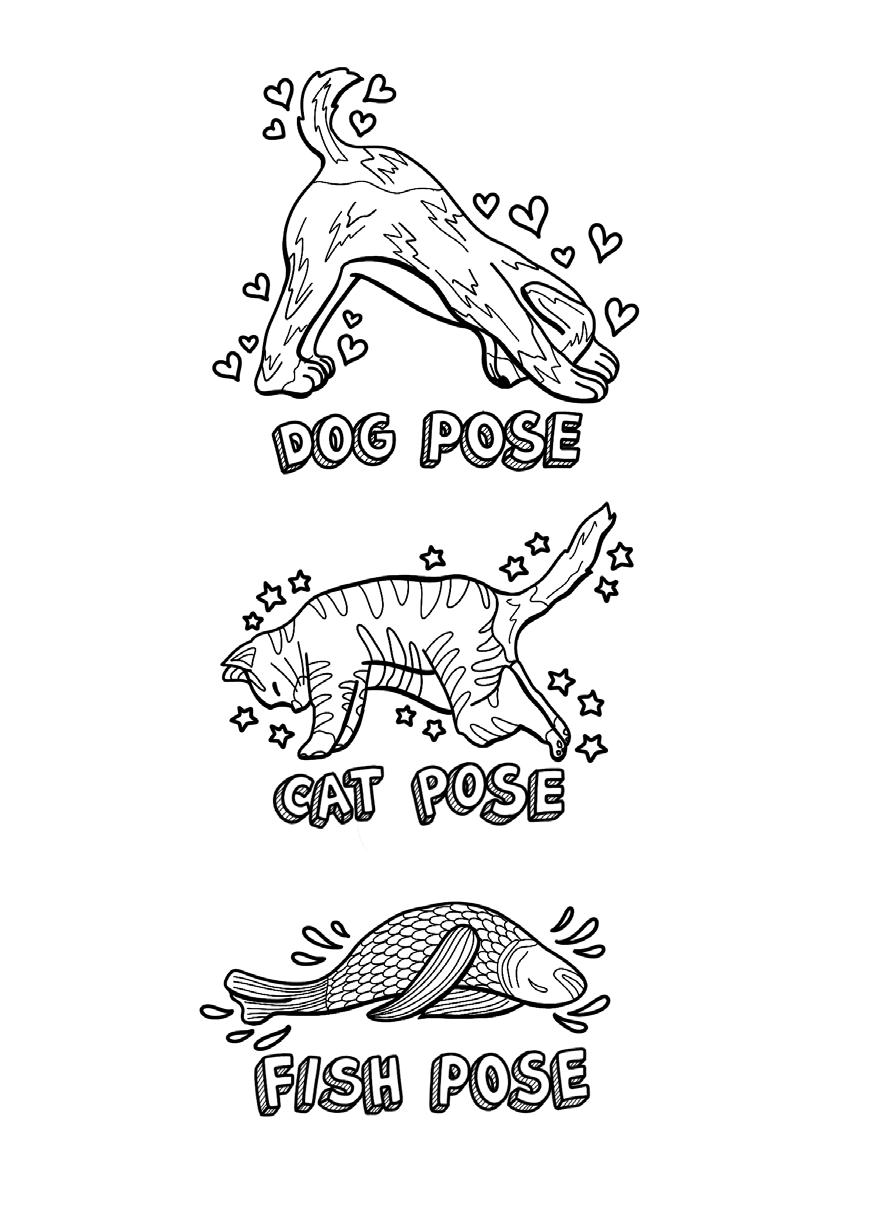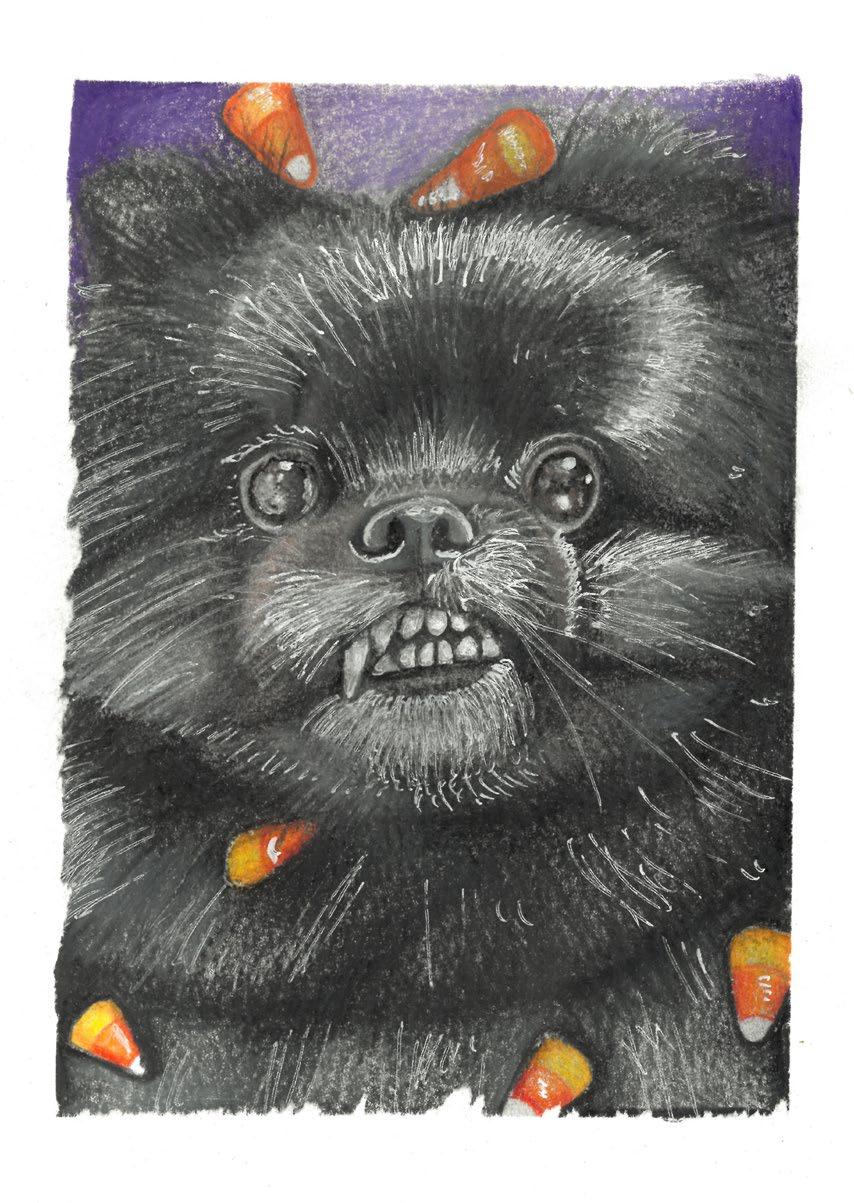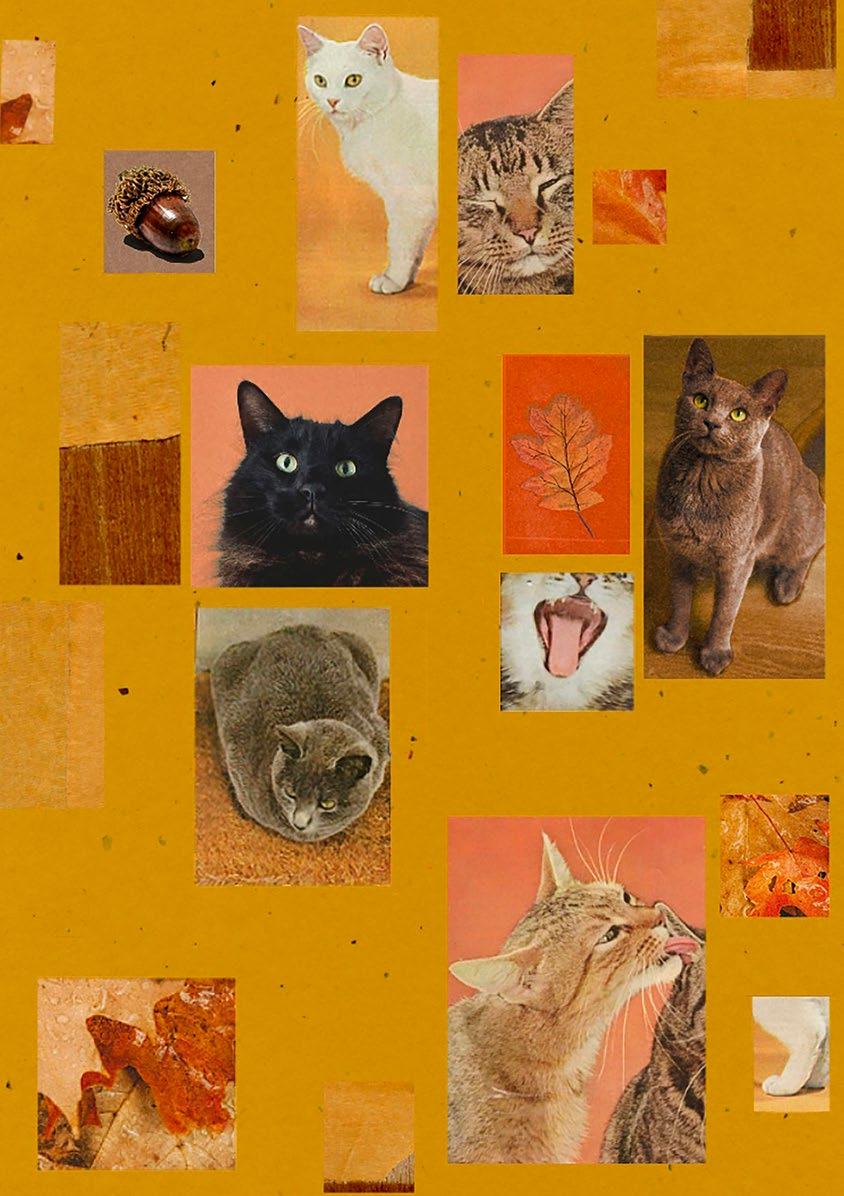








Thank you for your kisses when we are sad. Thank you for your tail wags, humor, and sass. Thank you for everything that you provide that makes life so much more fun with you in it. Thank you to the dogs that help protect and assist their owners. Thank you to the cats for providing all the cuddles. Thank you to the parakeets for providing extra beauty. Thank you to the wise turtles. To the rapid rabbits. And all of the special creatures that we call pets.
Sincerely, Swoonworthy Mag


Follow @swoonworthymag for more.
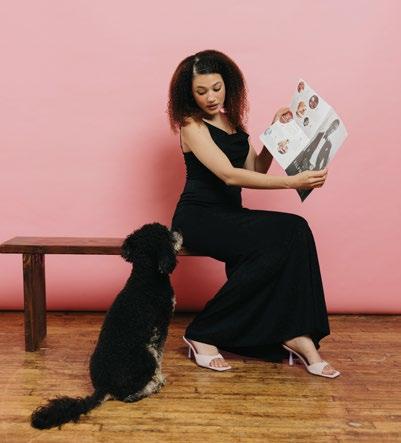

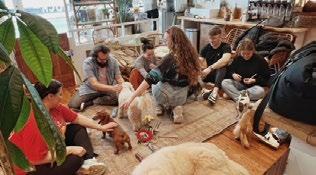


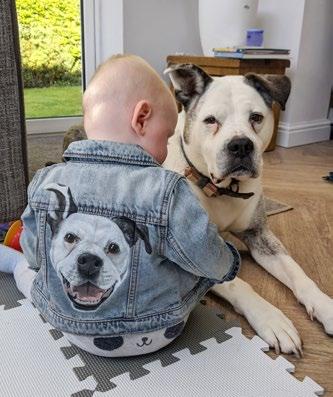



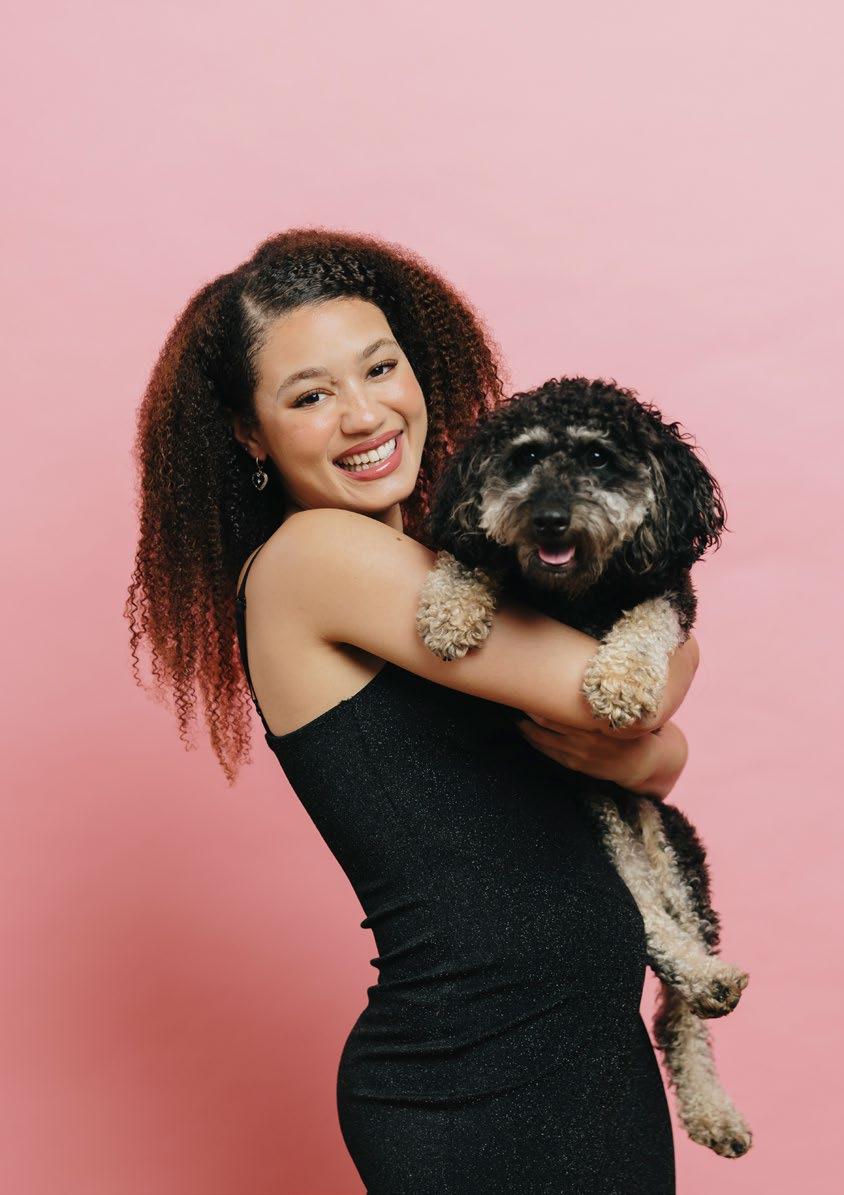

It’s Diana, darling. If you haven’t seen season two of Tell Me Lies, you should go watch it...like yesterday. Alicia’s character Diana has the ultimate microphone drop. Read on for some wisdom from Alicia Crowder.
Follow Alicia Crowder at: @alicialucillecrowder
What is your favorite rom-com?
I would say 500 Days of Summer. When I was a kid, I loved to watch movies and imagine what it would be like to live in that world. That was one universe that I really loved and would have loved to work on.
Speaking of universes, the Tell Me Lies universe. If you could make a Diana spin-off, what would you do?
*Spoiler alert*
I think it would be about her getting out of the relationship and post break-up with Steven. She’s discovered her own self-worth, and maybe a gap year where she travels. She’s so focused on her studies and limits herself in that way. Going totally off her normal path and traveling and having different experiences and maybe doing something more artistic. Maybe following one of her favorite movie groups around on tour for a year or something. Just something that’s out of her comfort zone.
that night so clearly. This is my first big thing. Getting the call from my manager and being almost in shock. It was one of the best moments of my life.
Are you allowed to talk about season two?
We just finished filming and I think it should be coming out sometime soon. There’s going to be a lot of amazing crazy twists and turns and fun new characters. If you follow our Instagram, some of the new cast have been posted on there, which is really fun. It’s fun having our core group, but also introducing new people to the world. It’s going to be spicy, I think it’s even more spicy than the first season. There’s so many surprises.
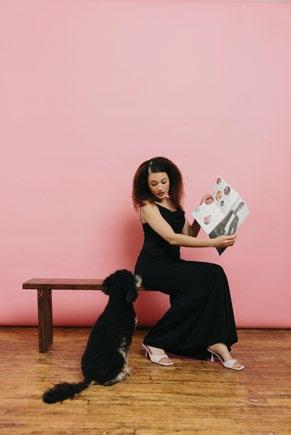
What was your audition process like?
It was your regular audition process. I sent in a self-tape, and then I did a couple callbacks. And then it goes up through the ranks of the producers and different people at the studios watching it. And then I got it. I remember

You’ve worked in so many different mediums (theater, TV, movies). Which is your favorite?
I started out doing theatre, and that’s what I really focused on in school and I didn’t know anything else for a while until I graduated. I would have to say TV is probably my favorite. Theatre is really, really hard. I really applaud the people who do it and make it their entire career. It is so physically and emotionally demanding. I did a play at Lincoln Center and it was really tough. I think it was the hardest project that I’ve ever worked on. What I like about TV


is you film the scene and get it done and then move on and see more of the finished product. What I really like about TV is that more people get to see it. You’re impacting more lives than in theatre. It’s all live, and whoever can get a seat can see it. TV it exists forever and you get to influence a lot more people.
Have you had some real-life rom-com moments in college?
In general, the goal with each new relationship is to take what you learn and apply it to the next. Like Diana and Lucy, I definitely had a learning curve in college. That’s where you often have your first serious relationship, and think it’s going to be forever. And then when it ends, it’s that first terrible heartbreak. If you’re able to pick yourself up and move on from that, you can have the next relationship be even stronger.
Do you have any pets?
I have a golden doodle that just turned one. He is like my best friend.
Do you have a favorite fragrance?
There is this perfume brand called Ffern. They make single-batch perfumes every season (for the winter, spring, summer, fall). They’re based out of the United Kingdom. Also anything sweet, vanilla, cake.
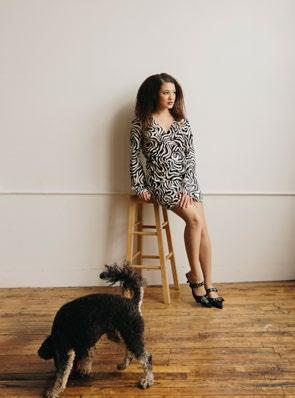
Top 3 wardrobe staples if you had to pick?
Because other people dress me for my job, in my day-to-day I wear a good pair of sweatpants and a fun graphic t-shirt.I also love platform sandals and filas.
What inspires you?

Advice to aspiring actors?
Keep at it. It’s so hard. I would say I did upwards of 200 auditions before I got this. I think that’s where most people find the most difficulty: is staying at it. It can be so hard to be told no a hundred times. But then it’s that 101st time. Stay persistent. Believe in yourself. Don’t take things personally. It’s not personal, ever, and if it is that’s their problem not yours. Stick with it. Try and have fun if you can.

Good stories. Good writing. Great art. Overhearing interesting, quirky things that people say on the street. Animals. Little kids. Seeing them play and their imagination and happiness is inspiring. Poetry. Great food. Great TV. Things that are funny. I love to watch adult comedy like Rick and Morty.
What is next for you?
Hopefully season three. As of now I am back auditioning. Settling back into life after shooting in Atlanta for four months.


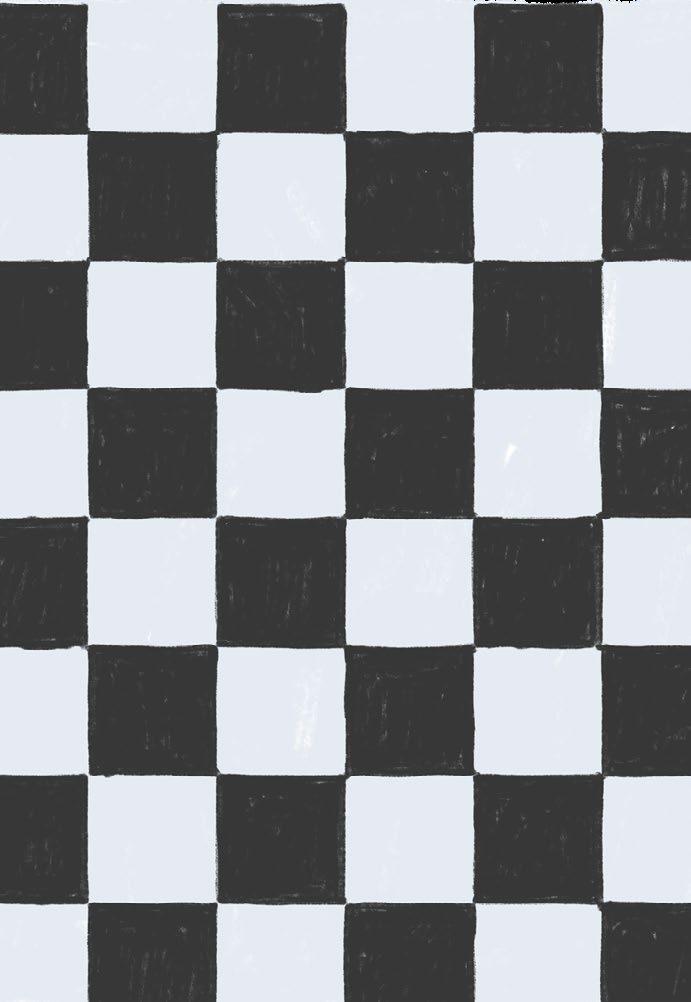
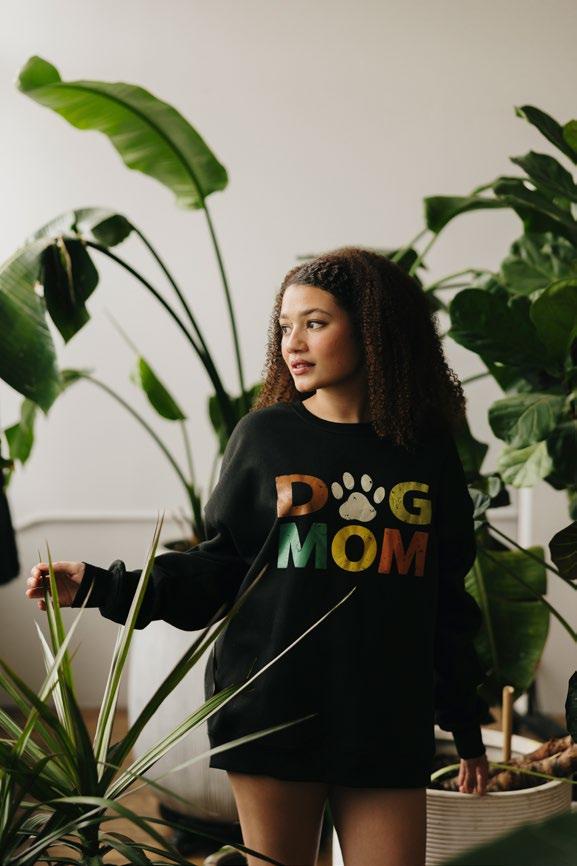







Books, Movies, and TV














We’ll Prescribe You a Cat by Syou Ishida. Five short stories about the heart-warming powers of cats. Here is a memorable quote from the book that definitely highlights the deep sentiments of Ishida: “The amount of time you spent together probably matters, but less time doesn’t mean less love. Whether it’s a day or a year, human or cat, and even if we may never see them again, there are those who are irreplaceable in our lives.”

Ratatoulle There is only one movie that can make us love rats. It’s definitely a film to pair with a glass of wine, cheese, and grapes (because who can resist them after seeing Remy make them seem like the most mouth-watering and utterly music-inducing combinations).




The Dachshund Wears Prada by Stefanie London. Rumor has it the CW is creating a television show out of this book. It’s about Isla Thompson, a social media marketing specialist turned assistant to a dog named Camilla. Camilla’s owner, Theo Garrison, is a grumpy British recluse. This book is fun for dog-lovers and those who prefer the “grumpy X sunshine” trope. Caution: it is a bit steamy, apparently.

Done and Dusted by Lyla Sage. Sometimes horses are basically just big dogs. Lyla Sage’s worldbuilding is super magical and it feels like you are truly there with the horses. Once you’ve finished her books, another recommendation is any book by Elsie Silver.
Wild Eyes by Elsie Silver. Country star Skylar Stone has a pet parrot named Cherry. It’s really giving adult Hannah Montana. Read for the vibes, stay for the spice.






Hotel for Dogs Two orphaned siblings living in foster care are forbidden to bring animals home, but they secretly take in stray dogs at an abandoned hotel anyway— transforming it into the ideal shelter and incredible paradise for dogs. It’s pretty creative.
Hannah Montana The Movie
In addition to the entertaining dancing and singing of this film, there are a plethora of different pets. Hannah has horses, chickens, dogs, and her cousin even has a pet ferret named Cooper.
Veronica Mars In this television show, Veronica Mars has a Pit Bull named Backup. Perfect for fans of a more adult Nancy Drew, and Kristen Bell fans too.
Friends This television show has many pets, from LaPooh and Clunkers the dogs and more.
Say You’ll Remember Me by Abby Jimenez is the April romance you won’t want to miss. Two words: hot veterinarian. And three more: puppies first date. We’re sold. Bonus points if you love mustard.





THEY CALL HER LADY LUCK THEY CALL HER LADY
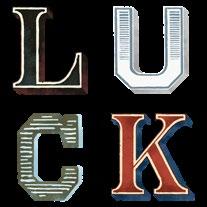

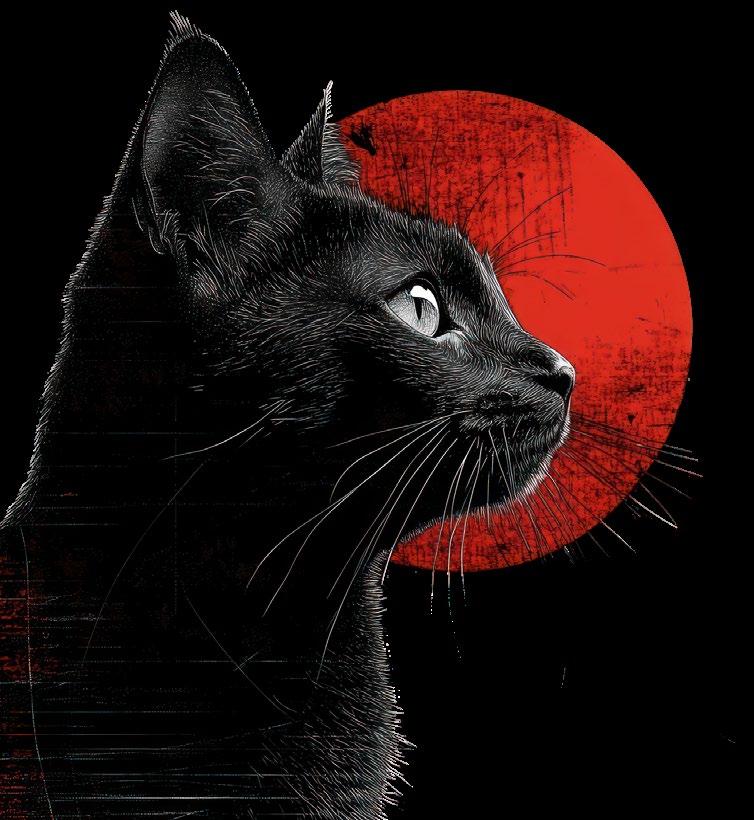




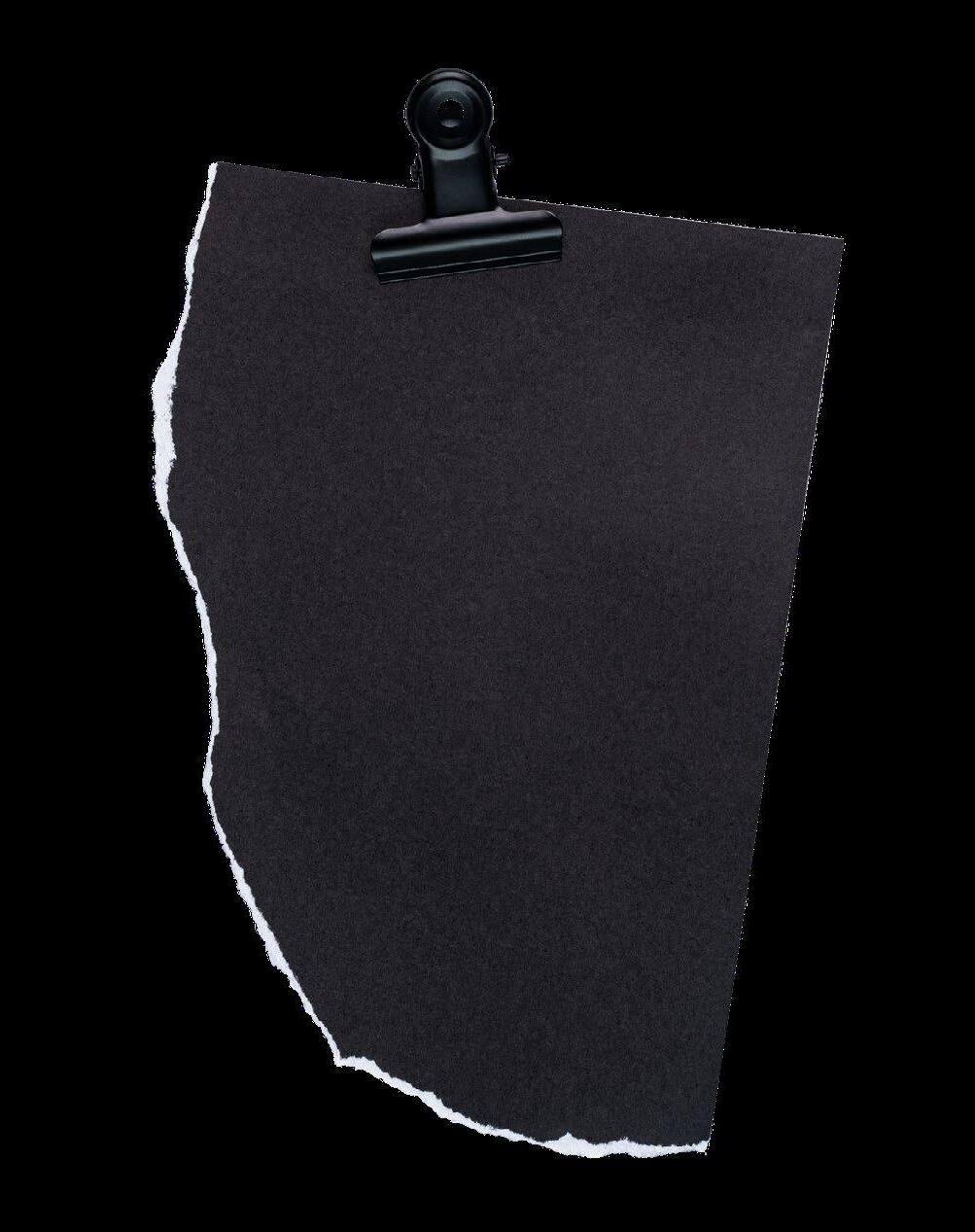
Of course we have to address the myth of black cats being unlucky. According to FourPaws.com, “Black cat superstition in Western culture dates back to Ancient Greece. According to Greek mythology, Zeus’s wife Hera once transformed her servant, Galinthias, into a black cat as punishment for impeding the birth of Hercules. Galinthias went on to become an assistant to Hecate, the goddess of witchcraft, and black cats have had unique meanings in various cultures ever since.”
In ancient Egypt, cats were sacred. Bastet, the ancient Egyptian goddess was first a lioness and later a cat. In Asia and the United Kingdom, owning a black cat is considered lucky. Sailors with a black cat aboard their ship were considered to have a safer journey. There are so many reasons why black cats are wonderful. They were even thought to be witches in some circles (and even if they are, the cool factor and amazingness only gets better).




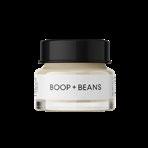
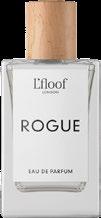
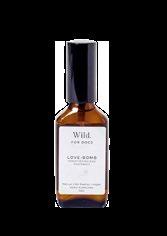
A recent trend has been fragrance for your best furry friends. The brand DedCool has a pet fragrance. Norfolk Natural Living has a lavender-scented dog cologne. Wild For Dogs carries a 4 in 1 natural Love-Bomb fragrance. Dolce and Gabbana has a dog fragrance mist called “Fefe” (the packaging is so pretty). It is described as a refreshing “woody scent”. The brand Bugalugs makes a papaya and coconut cat cologne (their mascot looks like Tom from Tom and Jerry’s ). L’floof London carries an eau de parfum called Rogue, a rose and smokey oud wood dog perfume, as well as Chase—an infusion of Sandalwood and amber— and Obey, a fruity floral with freesia and rose. The boop + beans Nose + Paw balm is an incredibly clever name. Even their poo bags are cute (called “Dump”). Of course, consult with your vet or groomer before trying these, especially if your dog or cat has notoriously sensitive skin.
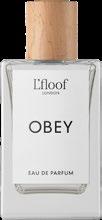

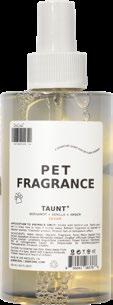
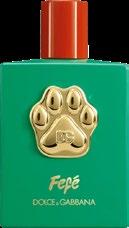
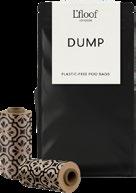



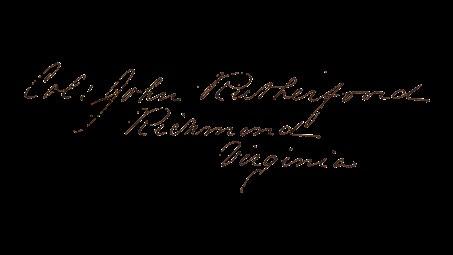
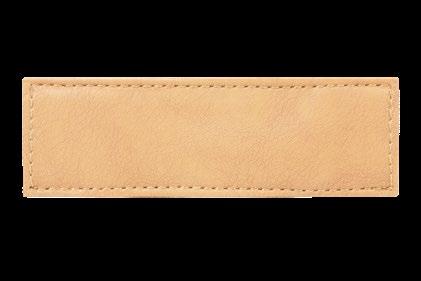



Animals! I like people a lot but I love animals, I don’t really have a desire to paint anything other than animals. I get requests for human portraits or floral designs a lot but I’m not good at anything that isn’t an animal and I would want to use my spare time to practice & get better.
What is your favorite item to design on? (denim jacket, shoe, key chain, a print?)
I love painting baby jackets the most, mainly because I get the cutest customer photos after. I’ve launched art prints this year though and designing these has been the most fun. The idea people have my art up in their home that isn’t a custom portrait is the nicest feeling.
Favorite embroidered text someone has requested?
I don’t do that much custom embroidery, I have a ‘favourite things’ jumper, and I get a lot ‘animal, food, booze’ combinations, like ‘dogs, pasta, gin’. My own says ‘dogs, naps, whiskey’. I love when people request funny photos of their pets, I did a chihuahua with a cigarette in its mouth (not lit ofc), I’m about to paint a corgi surrounded by food emojis and I’ve done a Bichon Frisé in 3 different hats. I love getting sent fun reference photos!
What is harder to design: cats or dogs?
Cats!! Dogs have more individual features and poses so they are often more identifiable, and much easier to paint. Cats you need such good reference photos, which is so hard for most cats; they’re so hard to embroider. Tabby cats are my favourite though, when you have a good reference image I love painting them. Shorthair black cats are my nemesis because they’re so hard to photograph!

What does a day in the life of your pet look like?
I have a rescue dog Lara — all she does is sleep — She won’t walk in the rain or wind (which I love) but we go to the post box together most days. I don’t see her for hours and sometimes she’s still down in my bedroom at 5pm. Every now and then she’ll come and sit with me. She’s very antisocial and lives my dream life. I’ve also got two tortoises one of which is a menace — I can hear him terrorising the other all day so had to move them to a different room. I have a snake too who is 21, I never knew snakes could live that long! He really doesn’t do much though minus sit in the heat.
What does a day in the life of Gina Flynn look like?
I am a night owl, so I get up very late (by most people’s standards). I’ll do fun things in the day, like walk the dog while everyone else is working or see my sister and my nephew (she’s also self employed which is great in summer). Then I work all evening, I moved my studio back to my house last year so I can just walk upstairs and work whenever. I do quite a few markets at weekends which I love because then I get to chat all day basically and it makes up for working by myself the rest of time.
What is next for GiFlynn Design?
Hopefully a bigger range of art prints, I’ve got a lot of ideas and it’s always fun to see if other people get my random references. I’d love to upgrade my embroidery machine so I can do more complex designs without taking hours. Keep painting peoples pets!



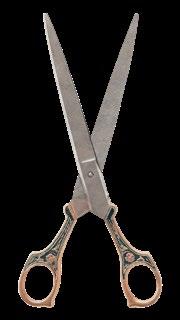
Follow Hilary & Hayley at: @hilaryshounds
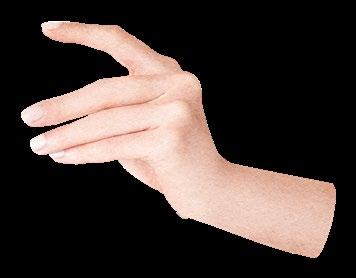

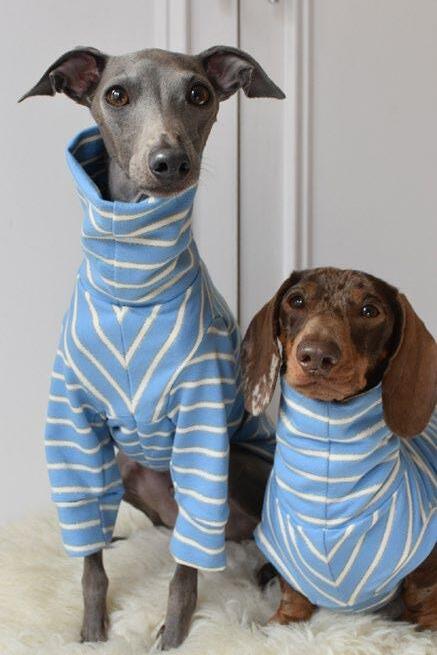
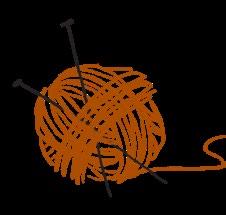



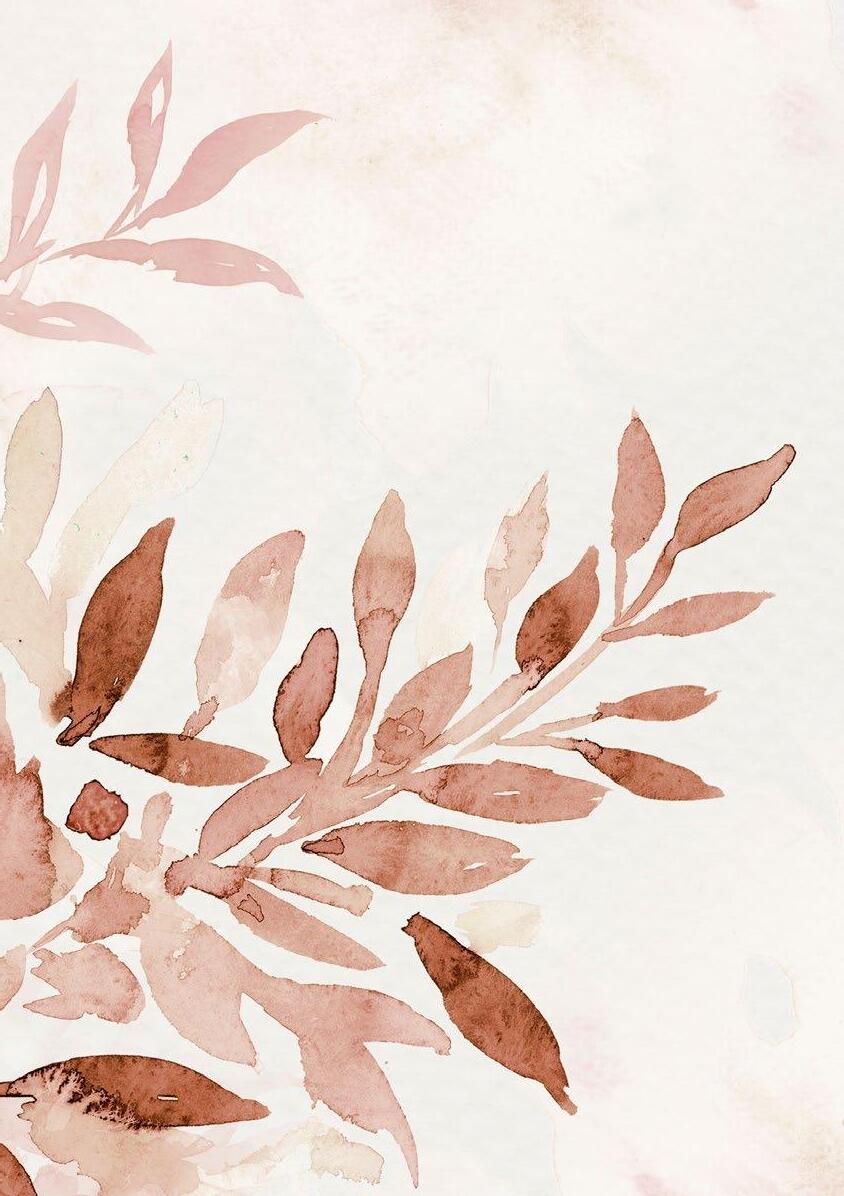


I know you guys started knitting pet sweaters in 2019. Tell us about your origin story.
dogs—including poodles, Labradors, and Greyhounds—and launched them in March 2021.
My mom started back in 2019 when she was approaching retirement. It was an idea to keep her busy, and she had already been knitting things for my dogs and friends were requesting the same. I decided to set up an Instagram page for her as a small project to keep her busy and give her something she loved to do. That’s how it started.
I helped her set up the Instagram page and showed her how to use everything, but she was really taking care of everything herself. She would get a few orders, and the page grew to about 100 followers while she made a jumper or snood every month. It was a sweet little project for the first year and a half or two years.
At some point, I needed jumpers for my two dogs, a Greyhound and an Italian Greyhound, who both need coverage in the winter. Another company I used to buy from had a backlog of 5,000 orders because of material shortages, and I couldn’t find anyone else I wanted to order from. I thought, since my mom is a great seamstress, why not try making fleeces ourselves?
At this point, my mom was still working but due to retire in a few months, so she was busy finishing her roles. While she made samples, I reached out to local seamstresses and found our amazing seamstress, Dada. Together with my mom, we made the first fleeces, tested them on friends’
We didn’t have a website then, so orders came through Instagram DMs. By taking advice and handling everything manually, we grew quickly, from around 100 followers to 1,000. By January 2022, we had 5,000 followers, and by January 2023, we reached 10,000.
We started with basic pieces and later added fun Christmas designs, which were unique both in terms of style and custom sizing. People love that we offer custom sizing for all breeds because even within the same breed, sizes can vary a lot. For example, one Italian Greyhound might weigh three kilos while another weighs seven. Custom sizing, along with the variety of materials, styles, and fun prints, really sets us apart.
That’s amazing. I actually was wondering about that. Like if, if it was exclusive to hounds?
We’ve made everything from a Chihuahua puppy size to Dobermans (my in-laws’ dog) and Labradors—every single tiny dog and much larger dogs too.
That’s incredible. I love that. And also so we love a mother daughter duo. How has working together changed your relationship?
I do think it’s changed our relationship, but it’s nice. It’s really nice to work together and
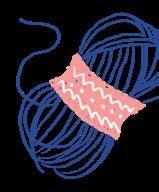

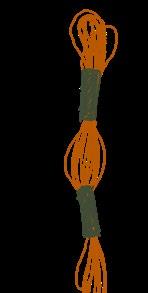
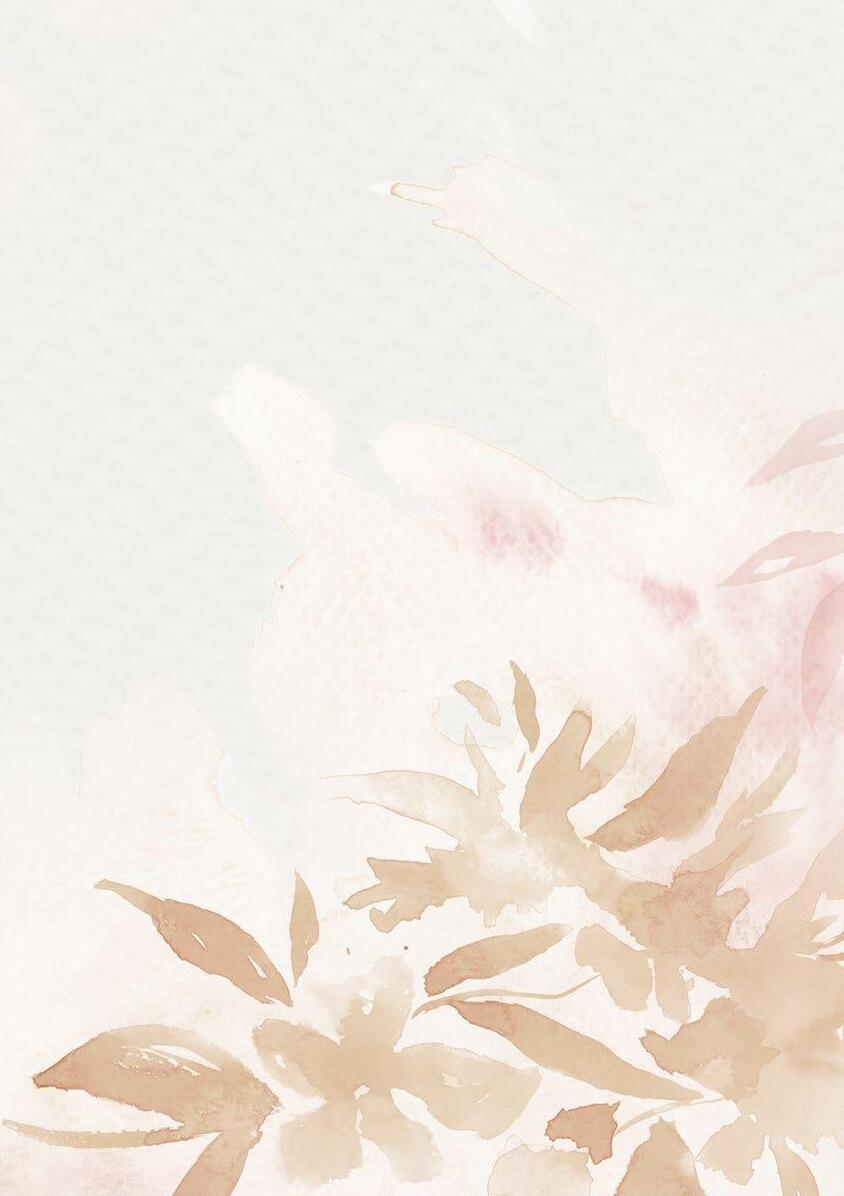
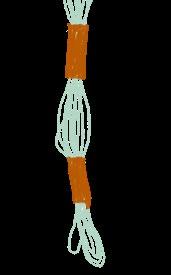


to feel like we’ve created this business. We just registered as a limited company this year and are improving our website now, so hitting those milestones feels really nice to have done together. I don’t think we talk more because we already talk a lot anyway. My mum is based in Yorkshire and I’m in London, so we work together remotely and when we’re together. It’s always a mix, but
we’re always looking for different ways to work together.
Do you have a favorite rom com?
Yes. The Notebook.
What inspires you and your mom?
I guess dogs are the inspiration, finding practical ways to give them more coverage. Creatively, they’re inspiring because every dog’s body shape is different, which pushes us to perfect our sizing for each one. I also love working with colors and bright prints. When I have time to go online and see what new fleece or Jersey fabrics my suppliers have, I get so excited if I find a new print I know my customers will love. I can’t keep secrets, so I always post it on stories straight away. That’s what excites me today.
That’s wonderful. And also, do you have any advice to anyone who would want to go into the animal retail space?
Yeah, the big thing is that you need to have a passion for it. It’s very useful if you have dogs

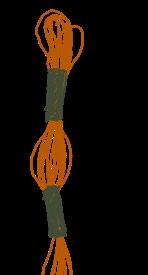
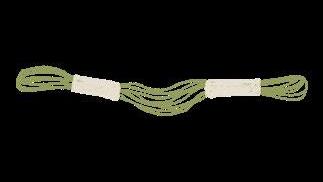
because my passion came from having my two dogs and looking at what they needed. Number one is having a passion, and number two is constantly trying to improve—whether it’s your website, shipping, offerings, or what you can provide in terms of colors, fabrics, or whatever your area is. There are so many smaller brands now offering unique and special products, so you don’t have to go to a big commercial place for your pets’ food, treats, clothing, or medications. There are so many great small brands now. So, yeah, passion and having dogs.
Are there ways you recommend to make garments last longer or take care of your beautiful pieces?
Luckily, the majority of what we sell is so easy to take care of. I can’t speak for other brands or specific fabrics, but I’d say 95% of what we sell can just go in the wash. I always recommend 20-30 degrees, though it would usually be fine a bit higher. The color and texture hold up better with a cooler wash, so that’s my top tip. Our main fleece fabrics are quick to wash and dry, usually within an hour, making them very easy to care for. For the posher jackets made with wool, they’re a bit more delicate, so I’d recommend handwashing and leaving them to dry flat.
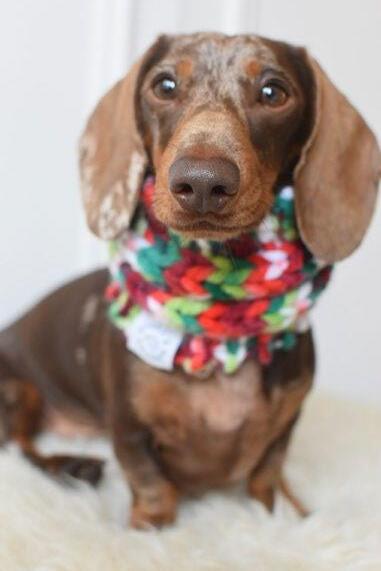

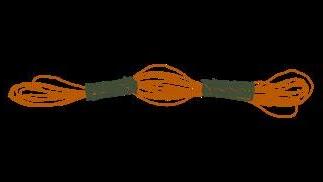


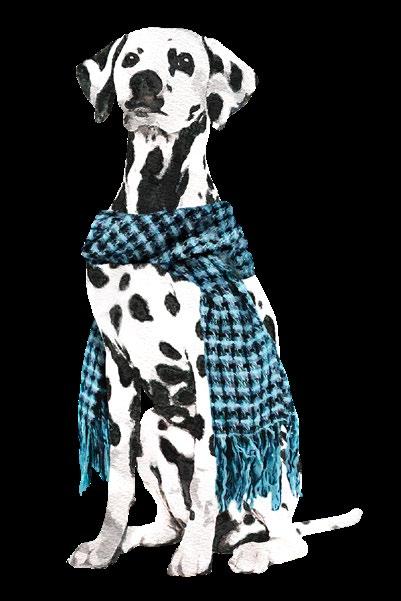
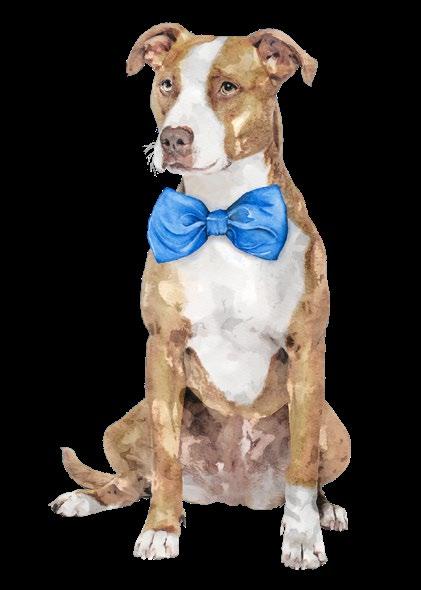

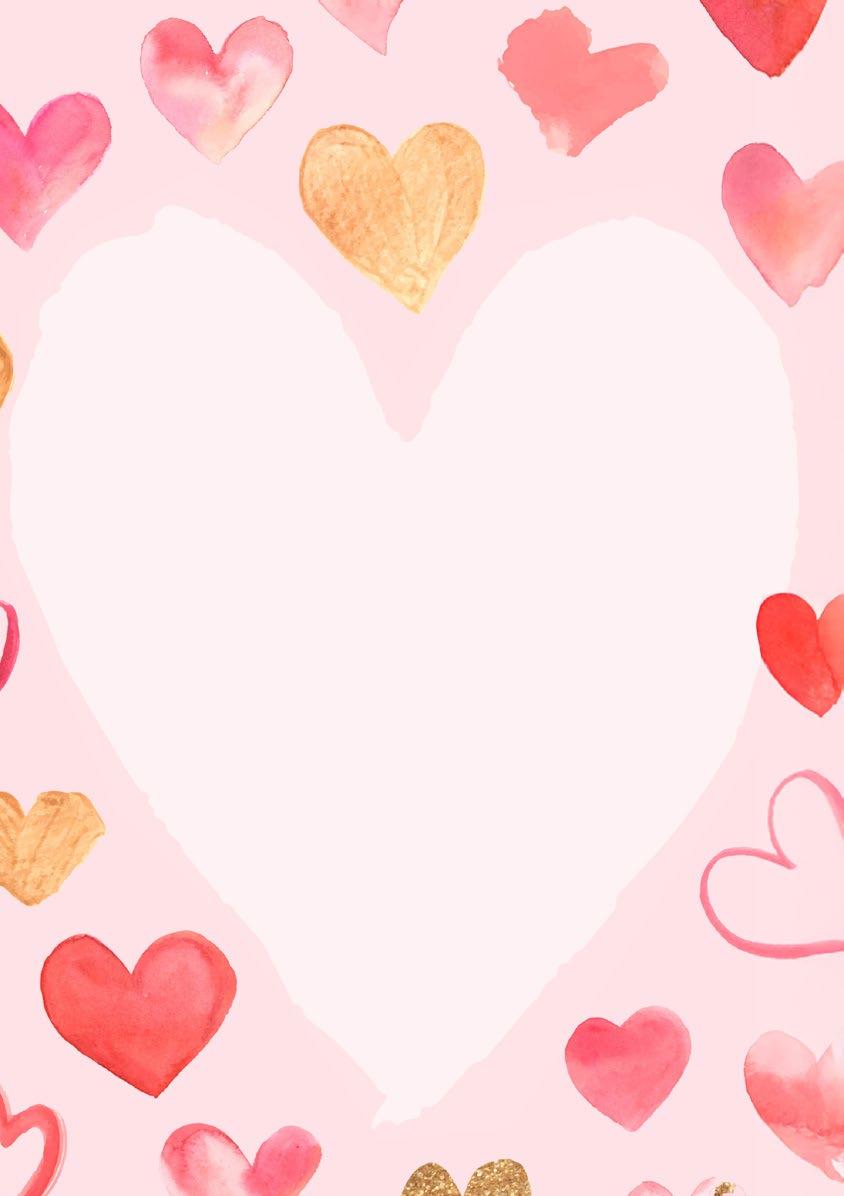



Describe your pet:
A. Long-haired dog/cat
B. Short-haired dog/cat
C. Hairless
What is your pet’s personality?
A. Super playful
B. Lazy, but happy
C. Shy
Pick your pet’s “style icon”?
A. Bruiser Woods from Legally Blonde
B. Fat Louis from Princess Diaries
C. Krull from How to Lose a Guy in Ten Days

Mostly A’s:

Hair accessories. Your pet needs to have a bow or two or three to rock an iconic fashion look. They have enough hair to really master the fashion look, and they know it.

Mostly B’s:
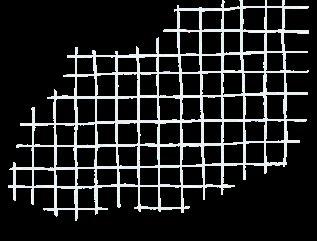
What is your pet’s favorite kind of treat?
A. Designer bag toy.
B. Puppacino or any kind of nice milk
C. A stray sock. The more random “toy”, the better.
What is your pet’s favorite season?
A. Spring, because it is pretty, like your pet.
B. Fall, because it is festive and fun.
C. Summer, because winter is just too cold.

A fashionable collar. Your dog or cat is the life of the party, and now everyone will know it with a new collar on their neck.

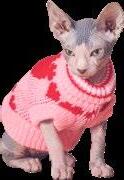
Mostly C’s:
Your pet needs a cozy sweater. Not
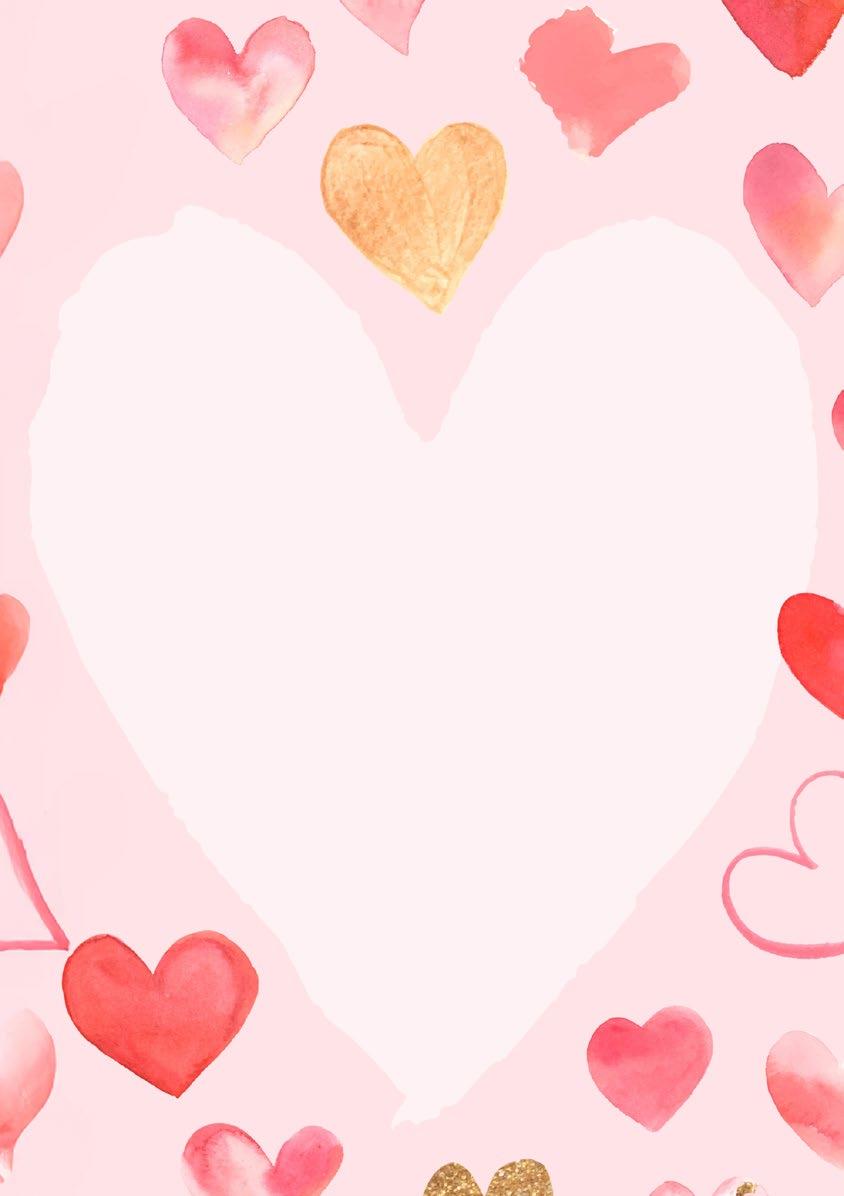


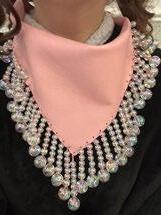
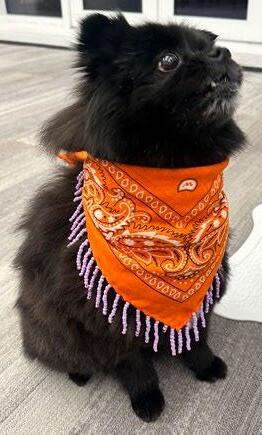
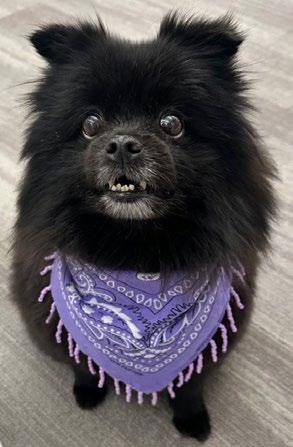
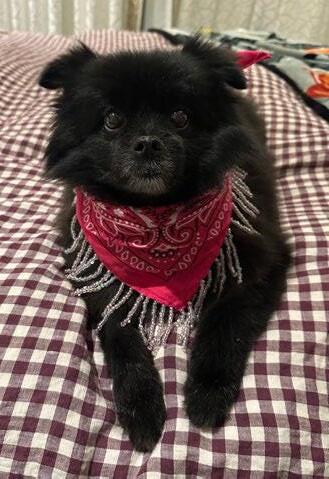
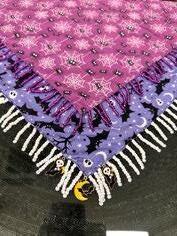
What is your favorite way to style Britt’s Bandanas on a human?
My favorite ways to style my bandanas on people is as a pop of color in an otherwise muted outfit. As someone who consistently wears black in her day-today, I feel that the bandanas add just enough color and flare to my outfit. I love to wear my bandanas around my studio to give some warmth to my neck and also to add some bling. They are the perfect addition to spice up any outfit, simple or otherwise, and to elevate your look, regardless of what you are doing. In addition to being stylish, they still function as a bandana would, to wipe sweat or to put around your neck or head.
What is your favorite way to style Britt’s bandanas on a pet?
As a dog mom of a sassy 12 year old Pomeranian who despises the majority of dog apparel, I found my bandanas to be the perfect way to accessorize her, while staying within her comfort zone. I love to style my dog’s bandanas for the season we are in. Especially during these darker months, it is very fun to have a bright bandana on a gloomy day. In addition, if you have a darker furred dog like her—they can help you see them them during the darker hours. Most importantly, they are very cute, comfortable and multifunctional for both you and your furry child.
In creating these bandanas, I found myself able to solve two issues: create stylish pet garments despite many pets distaste for wearing them, and turn something functional into something cute and personalized. I suffer from Hyperhydrosis, where I have overactive sweat glands in my hands and feet. This unfortunately hinders much of my art making process in which there is paper involved. I have always struggled with having to wipe my sweaty hands mid-crafting. Growing up my mom was always a big believer in the multifunction of the bandana, and in my case, its ability to absorb excess sweat when needed. I also was drawn to the many patterns, colors and styles that I could accessorize with, while also functioning as a rag to wipe my hands on. My bandanas, while not intended to be purely used as a
rag, have the functionality to serve as any rag would. In addition, they are 100% cotton and hand sewed by me.
I have too many Tackle stories to pick just one favorite, but I will say I am continuously entertained by her sass, her energy as an elder dog, and her personality. Tackle despises water and swimming of any kind, but will happily jump on a kayak with me or paddle board, assuming she is safely above the water. Some of my favorite Tackle memories are kayaking with her sitting in my lap.
What is the creative process like for your bespoke orders?
My creative process is to match the bandana to the pet/human. I typically will ask for a favorite color and or pattern and get inspired from there. I love to mix and match the beads with the bandanas and adding little charms to enhance them at the end.
My advice to anyone with older pets would be to take advantage of the slowing down by taking many long naps with your pet, going for slow and mindful walks, and making every bit count. I know it can be discouraging to see your pet’s health decline, especially as an elder-dog mom, but keep focusing on the positive. Yes your dog is aging and it sucks. But instead just try to think — look how happy and excited they are to simply be. Think of how lucky you are to have each other. Maybe there are some beautiful silver linings appearing in their old age. I know for one, my Pom has become the most loving, affectionate, and gentle she has been in her old age.
Whether it be paintings in my studio or making bandanas, my plan is to continue creating. I am also going to look into a Masters program in art therapy potentially in the future. But as of now, bananas and oil painting will be my life. And I hope to make use of these dark and slow days to cherish the time with my dog.
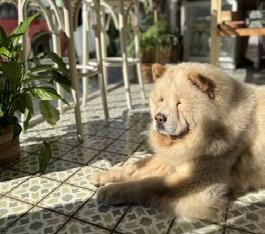



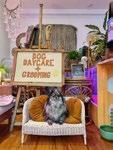
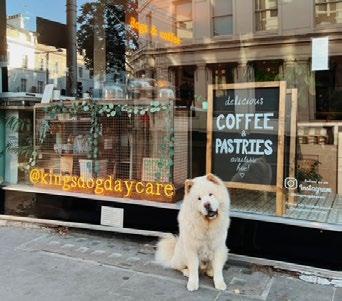
The only thing cuter than Daddy Daycare is doggy daycare. Hence, we had to speak with our local dog daycare, King’s Dog Daycare. The co-owner, Charlie, frequently has her hands full, but luckily she had a few moments to spare to answer our questions.
Follow King’s Dog Daycare at: @kingsdogdaycare
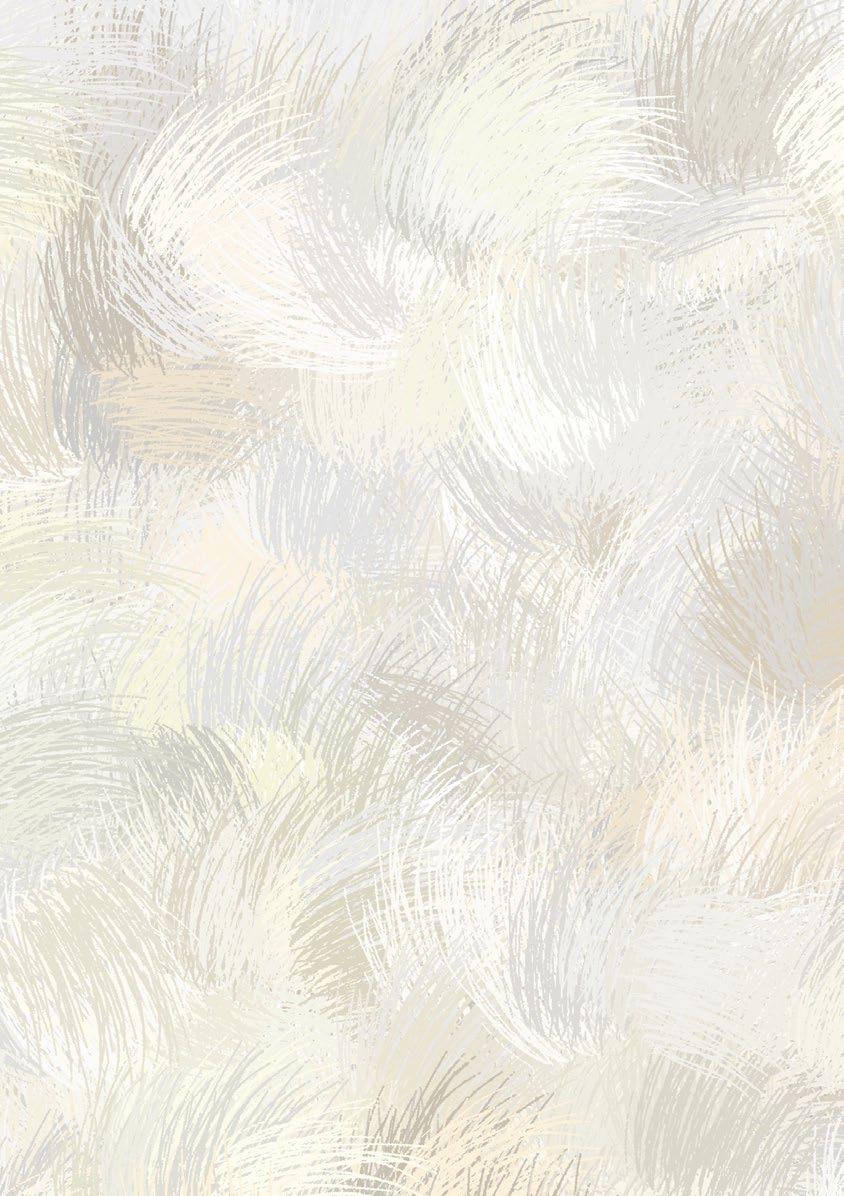
What is the origin story of King’s Dog Daycare?
Nick and I (Charlie) opened King’s Dog Daycare in November 2021. We started out with just our savings, a few slightly mad ideas and of course, our lovely Chow Chow: King Louie. Since opening, King’s has developed into a haven for both dogs and dog-lovers alike. We offer daycare, grooming and a “dog cafe’ style experience called “Pet-A-Pooch”.
What is a Pet-a-Pooch dog and how does that program work? Can anyone pet a pooch?
Pet-A-Pooch is a dog petting experience which allows dog enthusiasts to come and spend 45 minutes with some of our wonderful daycare dogs. They can pet them, play with them and cuddle them — and once the treats come out, the dogs might show off a couple of their best tricks!
What inspires you?
We are inspired every day by the amazing dogs that we have the pleasure of looking after and all of the lovely customers that we meet in the café. King’s is such a happy place to be that anyone who walks in always walks out with a smile on their face!
Favorite anecdotes or daycare memories?
There are far too many to choose from… but the day we had eight sausage dogs in daycare would definitely be a highlight!
Doggy etiquette, how do you handle two pup personalities that don’t mesh well?
We trial all dogs before accepting them as a regular in daycare. Every pup needs to come in for a one hour trial to make sure that they
are friendly and get on with the others. Should two dogs not get along we can always separate them, but that very rarely happens.
What does a day in the life of the dog daycare look like?
Most dogs are dropped off at daycare between 7am and 10am. They play in the playroom and the garden throughout the day and some of them take part in our Pet-A-Pooch sessions. 1pm is their lunch break where we feed them and make sure they have a little snooze. Afternoon energy usually hits around 2pm, as after lunch and a rest, the dogs tend to get a mad case of the zoomies! Things calm down after that and then there is always the 5pm madness when they all get excited for pick up time between 5pm and 7pm.
What is the most surprising thing you have learned as a business owner of a dog daycare?
The thing that has surprised us the most about owning a dog daycare is just how close we’ve become with our clients. We’ve looked after some of the dogs for years and they and their owners have truly become like family. Thatand no matter how many times you meet a new puppy, you will always scream like a little girl!
Next up for King’s Dog Daycare is a very exciting move! In November this year we will be moving into the premises next door to expand our daycare and grooming services and will also be opening a wellness centre for dogs offering physiotherapy, hydrotherapy and laser therapy. We will carry on holding our Pet-A-Pooch sessions but will also have a dogfriendly cafe for all to enjoy.
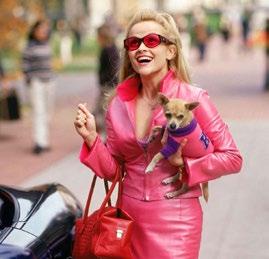
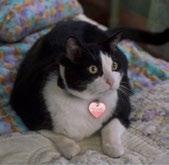
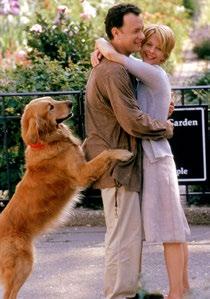
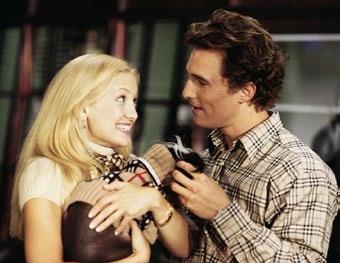

For anyone who is looking to be a firsttime pet owner, here are some ideas for what kind of items you might need in your home.
• Obviously the number one item is a dog bowl (or bowls) because food & water are essentials.
• Dog or cat bed (we also have a little customized pillow, but that’s very optional).
• The equivalent of a doggy “mobilehome” is a dog (or also a cat) backpack. It is a bit more stable to carry than a bag, and (at least for my dog) she loves it.
• Toys. It’s like the dog and cat equivalent of books or other entertaining stuff.
• Ramps or dog gates (especially for sausage dog).
Let’s also look to rom-coms for fun and funny inspiration.
• Fat Louis in Princess Diaries Two has a pink castle cat tower (and a tiara as an accessory).
• Bruiser Woods has many outfits (some of which even match Elle Woods).
• -In the cowboy romance book Wild Eyes, Skylar Stone has a pet bird called Cherry who repeats wonderfully mean things.
• In Jennifer Crusie’s Bet Me, they have a wildly intellectual cat named Chicken Marsala.
• We cannot forget about Krull the Chinese Crested in How to Lose a Guy in Ten Days, with the matching Burberry outfits and his “frosting” collar (which ends up inspiring a whole advertisement campaign).
• The Proposal adorable white floofball Kevin (and the terrifying scene with a cell phone/bird).
• Golden Retrievers in both You’ve Got Mail—named Brinkley, and also in The Sisterhood of the Travelling Pants Maggie (who helps Bridget end up running into Eric).
• There is also a romantic comedy solely about dogs called Puppy Love with Lucy Hale that is sort of loveably cringey.
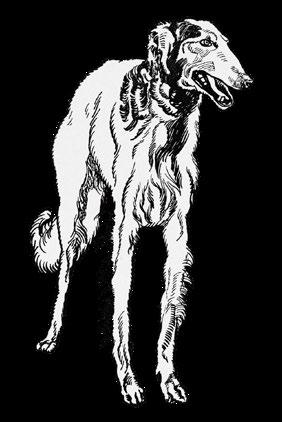

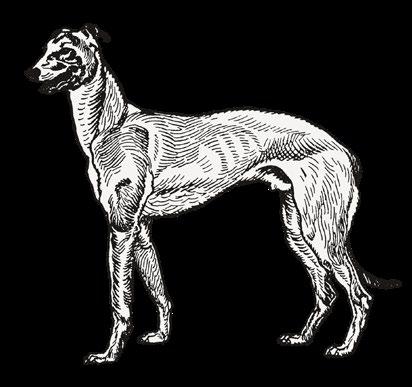

The folklore surrounding the parakeets of the London parks is that there was a James Bond movie that brought the parakeets somewhere. And then the birds escaped into the parks. When I sat in the park, it seemed the crows and the parakeets don’t get along. They were loudly squawking at each other obnoxiously. There could be some kind of comical Romeo & Juliet: bird version. They could compete over who had the best song, and instead of climbing the wall to get to Juliet they climb a tree to get to her nest.
A random aside: if humans had tails like dogs, we would all be in trouble. Then you would know how to spot a fake person instantly: if their tail didn’t wag when they claimed to be happy. Too bad, but also then we’d have to add more holes into our clothing.

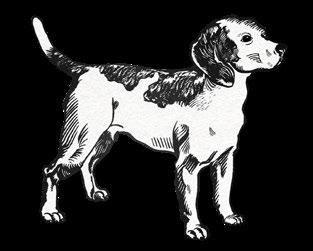
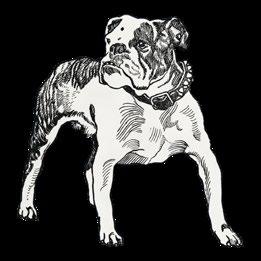
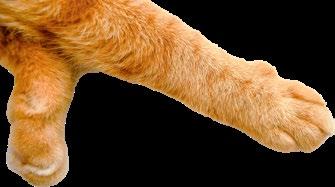



Animal companions make a wonderful addition to your home, bringing joy and the comfort of friendship. There are thousands of dogs and cats in rescue shelters across the country, just desperate to belong somewhere. Offer a forever home to a shelter animal and you will be repaid with love!
The shelter will help match you with an animal that best suits your own lifestyle, routine, and the type of home that you have (garden or not/stairs/children in the home). You should also be prepared to make reasonable changes to ensure the pairing goes smoothly. The shelter will inform you of any likes or dislikes that the animal has, and if any ongoing veterinary care is required. Ask about any specific training needs, special dietary requirements or behaviour needs (for example, taller and/or older dogs may find it uncomfortable to reach down and eat and drink from a bowl on the floor, so offer them raised bowls that stand in bowl racks). The shelter can also help you with updating the microchip details, and you should arrange pet insurance and register with a recommended local vet.



Here we look at ways to help your new rescue cat or dog adapt and acclimatise to their new home.
in each room of the home when they first go in, just in case there are any hazards that you hadn’t anticipated.
Firstly, make sure you have the essentials. Both cats and dogs appreciate a designated bed (although, of course, at other times they may choose to rest in other places). Also have a blanket for comfort and a selection of toys for play to relieve boredom. You’ll need a food bowl and food (any flavour/type preferences will be explained by the shelter), and a water bowl; wider, shallower dishes are preferable for cats as they do not like to push their whiskers into deep bowls, whereas deeper bowls suit the snout shape of dogs — they need deep bowls to lap from. You’ll need appropriate cleaning products that are nontoxic to pets - check the labels!
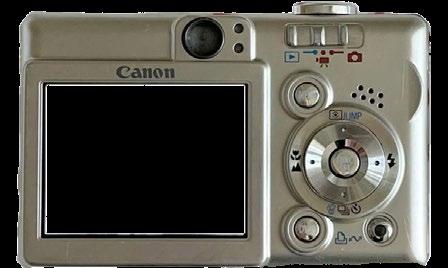
Next, prepare your home for their arrival. Pet-proof your house, moving anything you don’t want them to get hold of or accidentally knock into/over. Check your home for hazards such as chemicals, wires, medicines, and toxic plants. Plan the space, working out where your pet will rest, sleep, play and eat. Create something like a den in a quiet space away from the main thoroughfares and busy areas. If you’re having an indoor litter tray, don’t locate the tray near to their food/water station; animals don’t want to eat where they go to the toilet, any more than you do! Despite your thorough planning and checking, make sure you supervise your pet
Young animals, kittens and puppies, won’t likely have an established routine nor set dietary preferences nor ingrained behavioural patterns. They are also generally more relaxed and will be more inquisitive around the home and with new people. In this way, it is commonly easier to introduce a younger animal into your home. However, if you follow advice, settling an older animal into your home and life can be quite straightforward, simply requiring a little more thought from the animal’s perspective. Older animals will often feel anxious when they first arrive, overwhelmed by the new smells and strange place and unknown faces. They are simply nervous about their new surroundings. Don’t expect them to behave in the way you want. They may have been at the shelter for a long time, and have to adjust to being inside a home. Likely they will seek to hide or separate themselves from you in the beginning, until they get to know you; this is completely normal. They need to go at their own pace. It takes a minimum of three weeks for a new animal to learn your routine and start to decompress. Make sure they have a space that they can go to to feel safe, without being forced to interact with anyone; for instance, a bed behind the sofa or under a table gives them a sense of

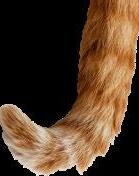
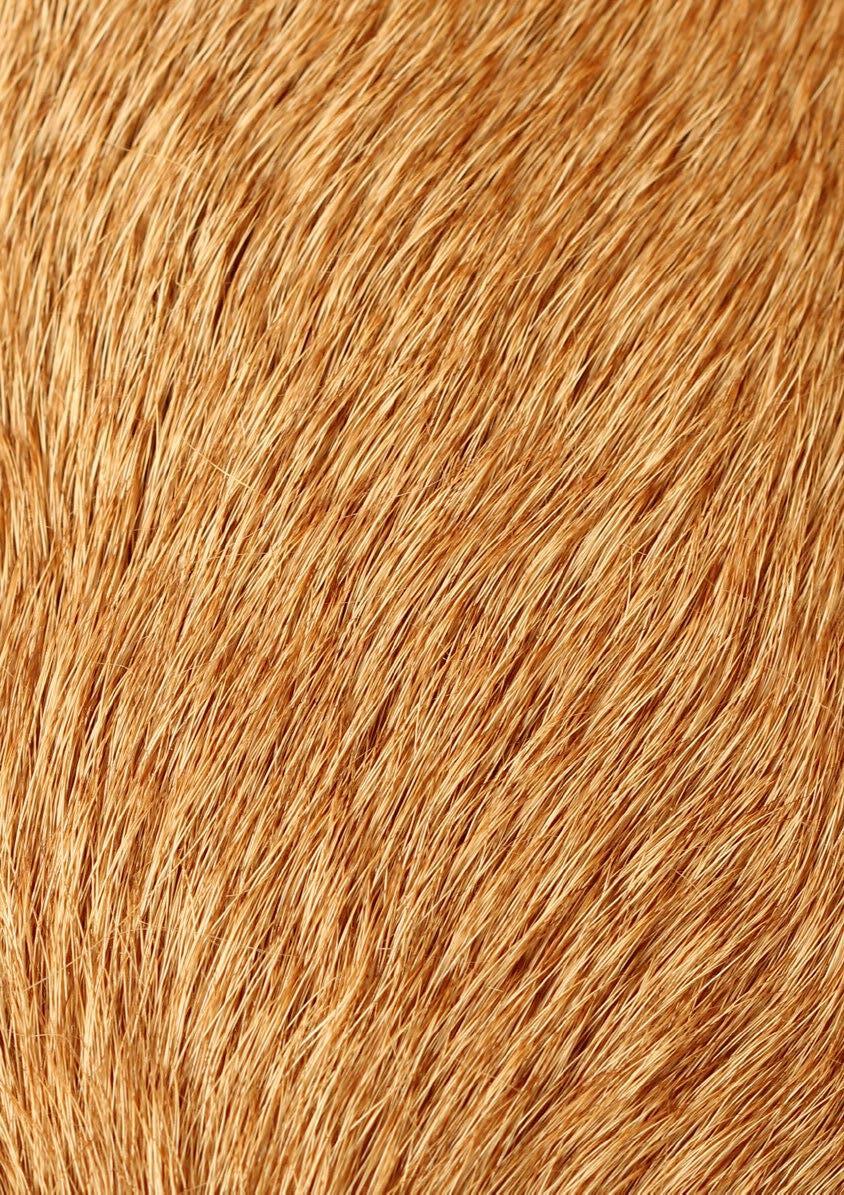
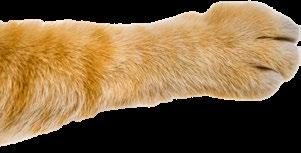

safety, as they won’t be in the open room and they won’t be observed. They won’t feel exposed, and can rest and observe their new surroundings without feeling pressure. This will help them to gain confidence in the new environment. Put some treats down in their safe space, to help them understand that that is their place and so they associate that place with good things. Let them spend time in their safe space undisturbed. Don’t fuss them too much; they’ll approach you when they feel comfortable enough to do so. Soothing words can take the place of cuddles, whilst your pet gets to trust you. Don’t make sudden movements and the environment should be calm and peaceful. You can also use the ‘food enrichment’ technique to encourage your new pet to explore their new environment; placing treats around the home will prompt and reward exploration.
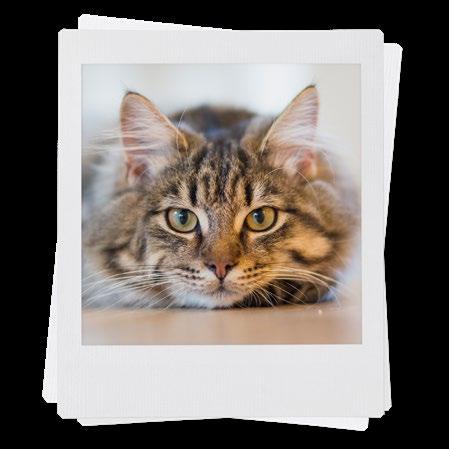

You are unlikely to find out exactly what the animal was used to in its previous home. They may have been allowed up on the sofa or to sleep on their owner’s bed, for example. Or if the animal was a street rescue,
it might not know what toys are for. It will take time for the new animal to learn what’s expected of it, what is and is not permitted and to learn your routine. If you encounter behaviour that you do not want, like sleeping in bed with you, use treats and toys to make the den area much more appealing to them. Do not shut a door on an animal. For instance, if you don’t want a dog sleeping on your bed, don’t shut them out at night; rather, put a baby gate up, so that they can still have the comfort of seeing you but they can’t access the bed. Despite being an older animal, they might never have been house-trained and so could need help with
this. Just be patient and understanding, and look out for their body language cues — any signs that they are feeling frightened (ears flat, tail between legs, avoiding eye contact) and respond appropriately (backing away, not looking at them, reassuring them by talking softly, giving treats).
If there are existing pets in the home,
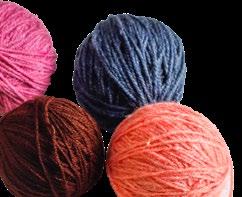
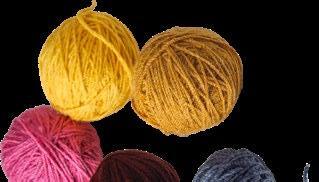
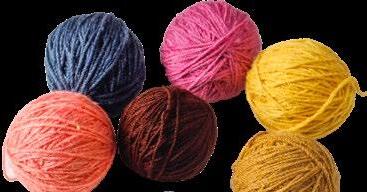
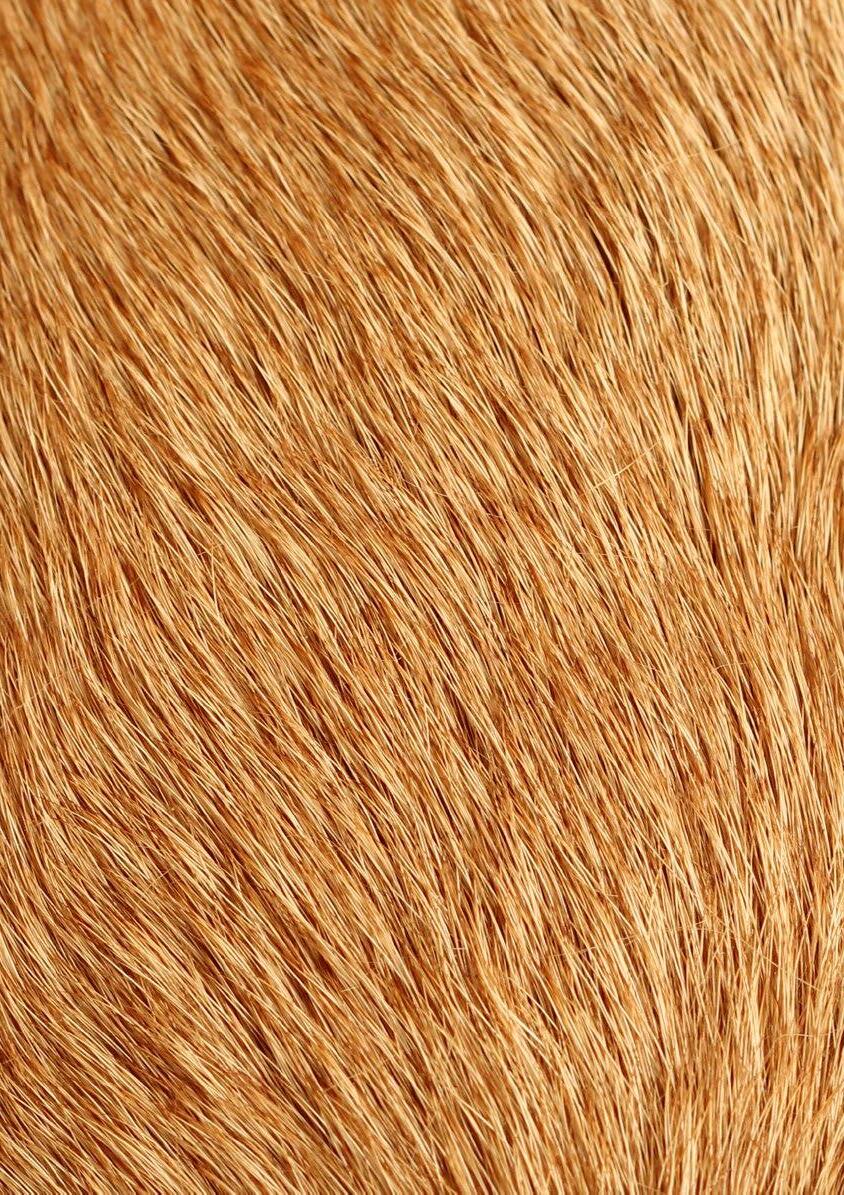

introductions should be done slowly and calmly. Keep the new animal in a separate room from the existing animals to begin with, allowing the new animal to get used to the scents and sounds of the others without having to encounter them. When they are introduced, each animal should have their own food and water bowls, set at least a couple of metres apart, so that they are not forced to compete for resources; this would cause anxiety and could lead to fights.
It’s all about decreasing intensity levels. Do not stand over your new pet; it’s intimidating. Do not stare at them; you think you’re gazing adoringly, but animals take being stared at as an aggressive action. When you do make eye contact, blink slowly. This is a visual signal that you are friendly.
Create a routine and stick to it as much as possible. This helps your animal settle, because they begin to map what will happen
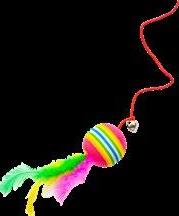
when and therefore nothing is a surprise or destabilising for them. As your animal settles, you’ll notice his or her personality coming out. This will also inform you regarding their likes and dislikes.
If you have adopted a dog, keep walks short and in the same location for the first weeks. This will give the animal time to get used to the new area and to get their bearings. Make sure you have a well-fitted harness, as nervous dogs can back out of loosefitting ones. If you have adopted a cat, keep them inside for the first four weeks, so that they can orient themselves. When you do let them out, place their litter tray by the door, so that they can smell their way back, should they become confused. Alternatively, consider having a catio — an enclosed space (cat patio) that will allow your cat outside

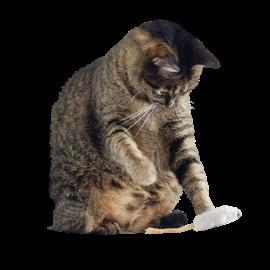
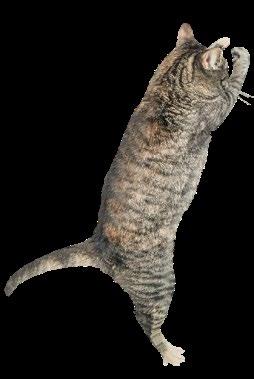

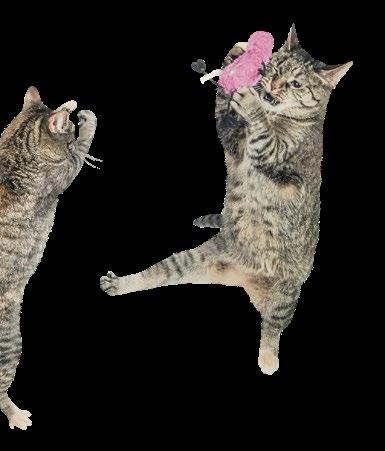

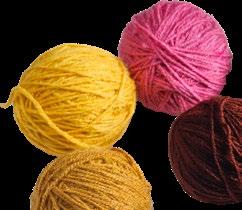
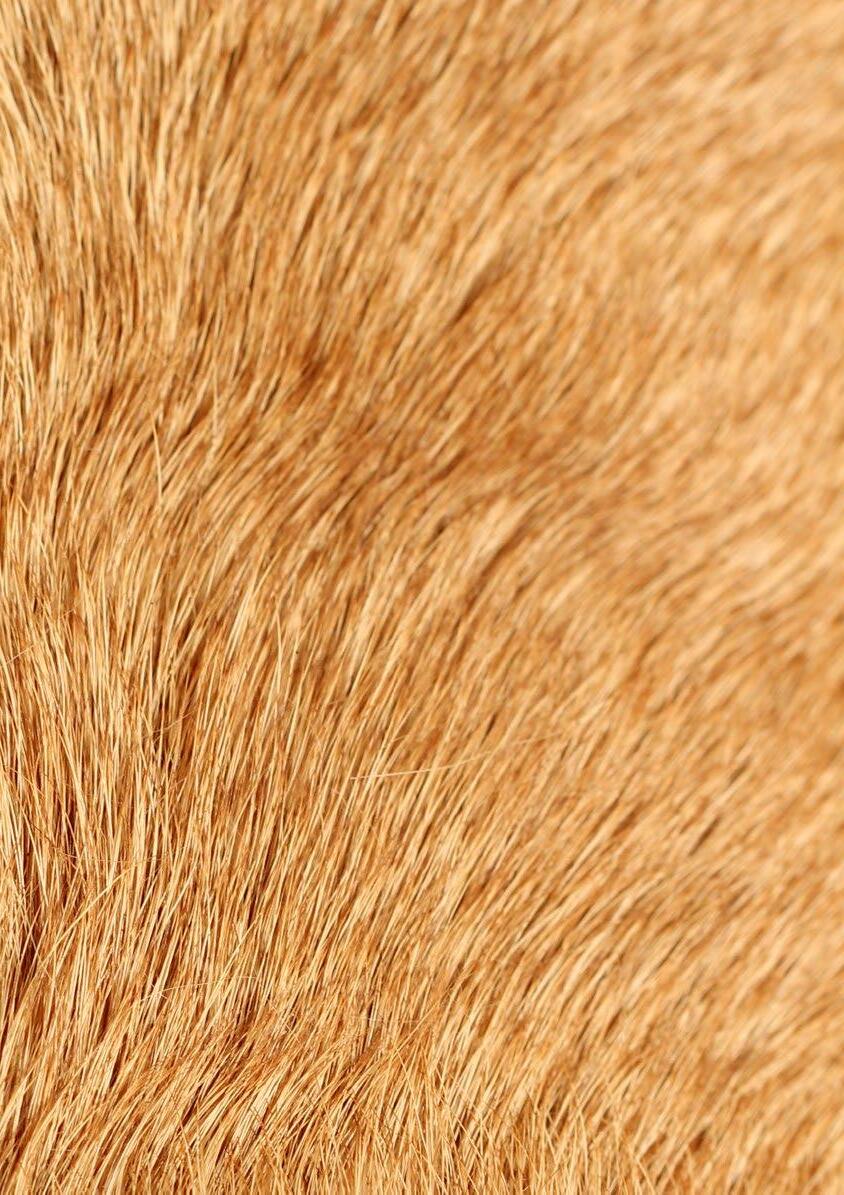














If you live in London, Love My Human Townhouse café has wonderful options for both special events and for a classic date night (or even lunch date). Their menus are utter perfection for both humans and dogs alike. They even have a retail store a few doors down where you can find treats, accessories, and so much more for your dog.
For the New Yorkers, I highly recommend Kobrick Coffee for a fun daytime event, and their bar just nextdoor for nightime. They truly have one of the most underrated espresso martinis of all time, and they’ve been consistently wonderful. They also have a lot of really nice, festive seasonal beverages if espresso martinis are not your thing (I even recall a drink that gets lit on fire).
Lastly, a more universal option: go walk in the park. It seems kind of simple, but a walk in the park really can be romantic (channel your inner When Harry Met Sally). Don’t forget a hat and scarf if it starts to get chilly (or clothing for your fur baby too if they need it).









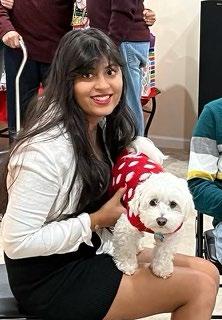

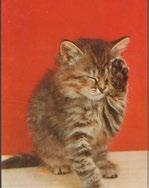

Anu is a Clevelander living in New York and a graduate of New York University with a Bachelor of Arts in Politics and Economics, and a Minor in Film Production. She has worked for organizations such as Environment New York, Hillary for America, Alissa Neil PR, Broadway Video, Care in action, and the National Domestic Workers Alliance. She’s been previously published in Brown Girl Magazine, Burnt Roti, and Washington Square News. When not writing, she can be found watching stand up specials and pretending to be a fan of the Cavs.
Follow Anu at: @anubhuti_kumar

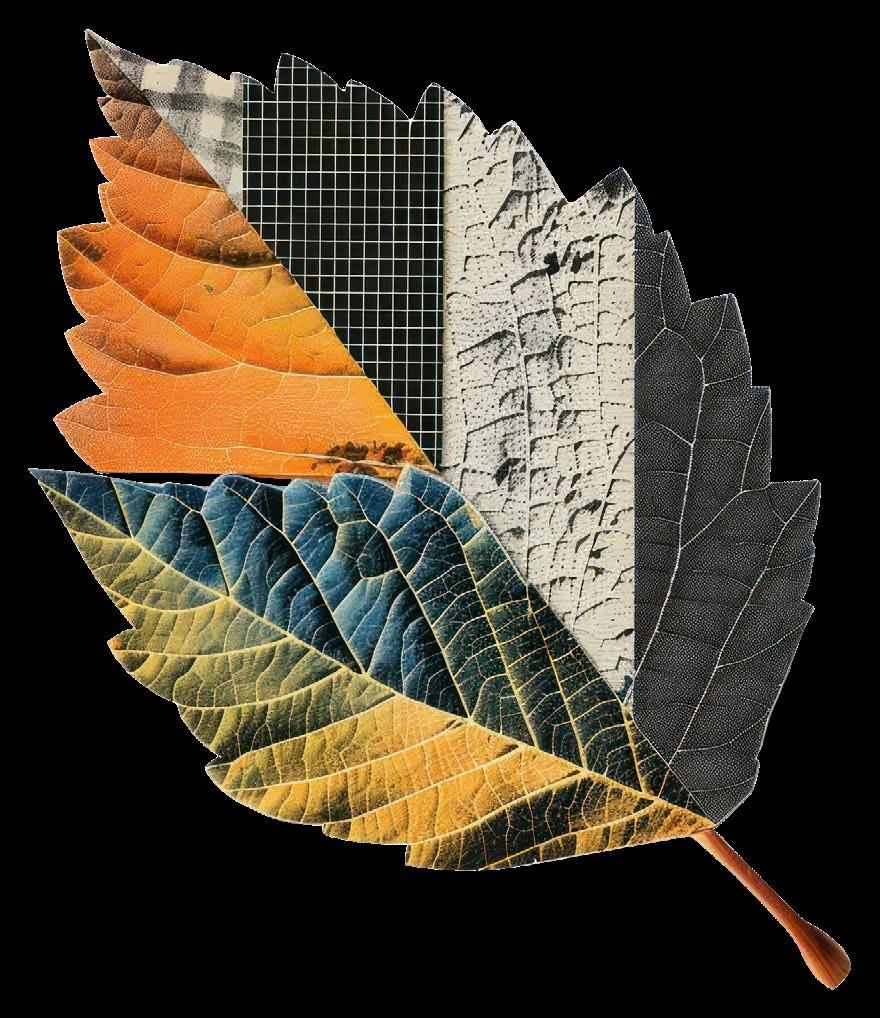
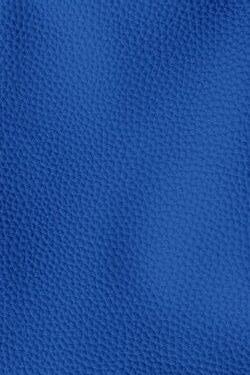

My roommate and I have a cat together but we’re moving apart soon!
Co-parenting tips?
Sure thing! I bring you first hand-tips and insights from my best friend who coparents my cat-niece Soju with her former roommate:
On time-sharing: They switch off every three months, both parents living in the same city. It works well for them because they can use the time they aren’t with Soju to travel. One of their parents are local so they take Soju during the holiday seasons so it’s easier for the other to visit family away during that time.
On living in the same city: This is definitely essential if possible. It allows them to visit each other when they miss Soju on their time away from her and makes it infinitely easier to switch off.
On costs: What they’ve found to be most efficient is taking care of all basic costs on their respective time with her, and if any emergency or unexpected large costs like vet visits come up, they split those 50/50.
On staying flexible: It’s really game-changing that they don’t have to look for pet sitters if they do need to go out offhand for a few days. They support each other the best they can in taking care of Soju on a weekend or two during each other’s time as needed. It’s also reassuring to know that she is with another parent and reliably cared for rather than worrying about leaving her with new people everytime or people who don’t know her well.
All in all, friendship and trust are central to this (and probably any?) co-parenting relationship, and that requires constant effort, grace, and love.
I’m a New Yorker adopting a puppy soon! What do I need to keep in mind the first few months?
Adopting a pet is a lot of work and there’s a lot to keep in mind, especially in New York when you’re working with small apartments, crowded parks, dirty sidewalks, and not a lot of outdoor space to run around!
That being said, there’s a few things to keep in mind. First and foremost, does your apartment building allow pets? Many buildings have policies around the kind, size, or amount of pets you are allowed to have in your unit (if at all) and you might not have paid attention to that when you first moved in if you didn’t have a pet at the time! So before getting your heart set on a furry friend, make sure to check your lease!
Next up, puppies are energetic and also not trained when they first come home! Make sure to set aside a small, safe, space when they can run around and get acclimated without hurting themselves or costing you your grandma’s china or scratching up your new sofa. Pet gates are your friend!
Finally, puppies are just babies! Like all little ones they need vaccines. Make sure to find a vet and set up their appointments ASAP, and keep them contained and safe from catching diseases until they are vaccinated!


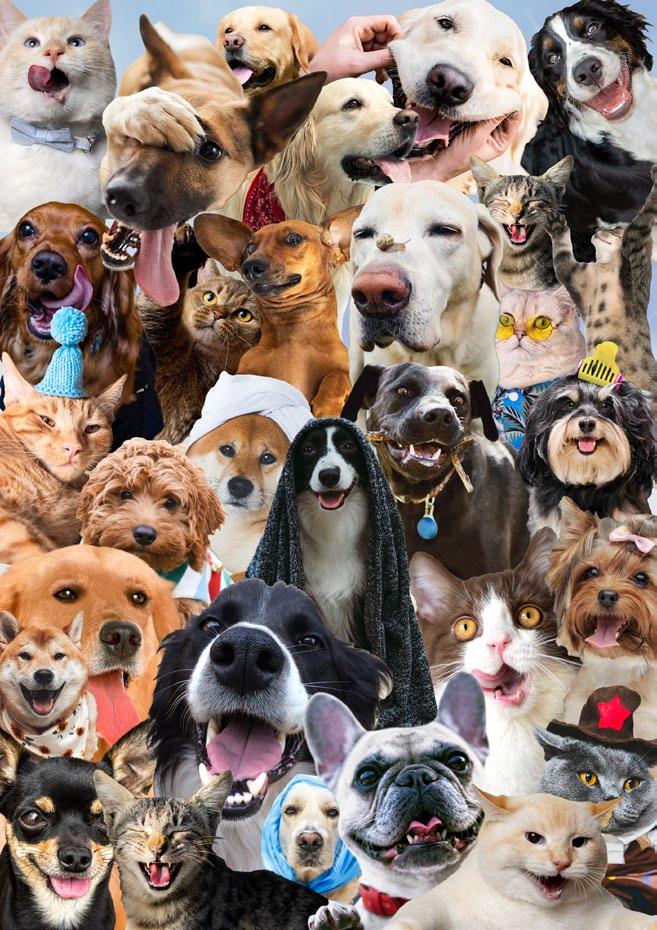

New York is, let’s say, not the cleanest city even for adult humans, and there’s plenty of bacteria on the sidewalks and ground that your puppy will be close to often, we want to ensure they don’t catch any stomach bugs or infections.
I want a pet but I live in a small apartment! Recommendations on what I should get?
The small apartment might at first thought feel like a limiting factor, but in actuality there’s a lot of options for pets that will be healthy and happy to keep you company in small spaces!
First off, many breeds of puppies are great in apartments as long as you make an effort to see to their needs - take them out for regular walks to burn some energy and meet their friends and neighbors and show them all the love!
If you’re more chill and ~low maintenance~ a cat will match your energy. They are independent and snuggly (perfect combo!) and just need a few scratch toys and a cat tree.
For some tiny furry cuties, try a rabbit, chinchilla, hamster, or guinea pig. They have their own mini home inside your home (perfect for apartment living) and are quiet and totally cuddleable! Just be careful and close the doors so they don’t make an escape, small can mean hard to find.
And finally, if snuggly isn’t the vibe you’re looking for from your pets, try a bird! Just
make sure they aren’t too loud for those who might share a wall with you! Reptiles like lizards and snakes might also be great, quiet company.
Also don’t discount the obvious, fishes! Any fish parent could tell you there are so many beautiful varieties of fish, incredible aquarium options, and you can build a little community in your own home.
are some clever pet names?
I’m glad you asked! Here’s some I’ve come across that I just adore:
– Get two boxer puppies and name them Calvin and Klein.
– A pomeranian named Pikachu. Tell me that isn’t the cutest.
– Soju. Yes, like the alcohol. Works for really any animal.
– A pitbull named Brad.
– Mewton. Speaks for itself.
– A springer named Jerry.
– A very small pet named Shaq. We love a little irony.
– A pupper named Sarah Jessica Barker.
– A beagle named Legal.
– A small fluffy puppy (preferably white so it looks like a rice ball) named Sushi.
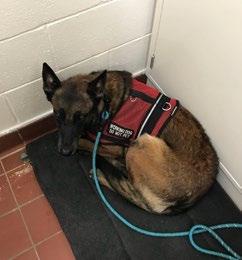
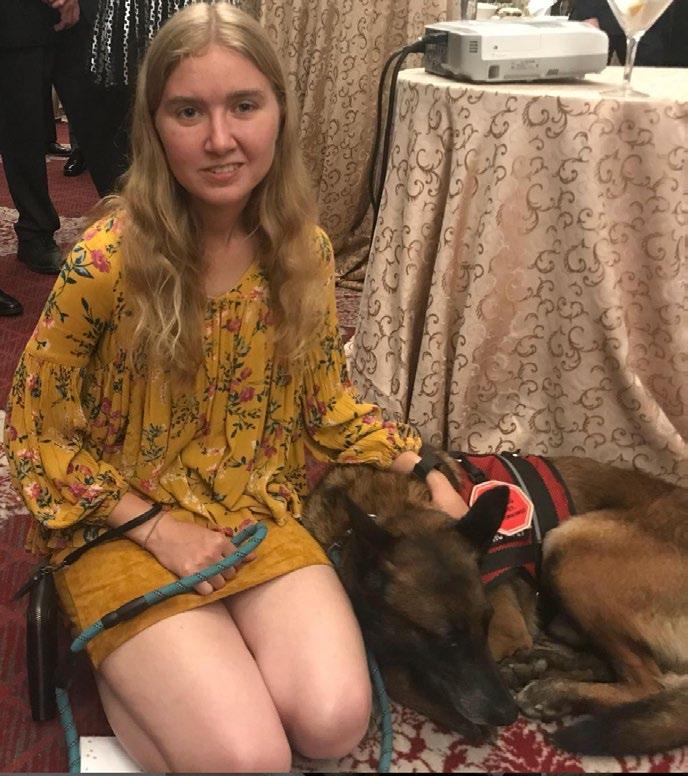

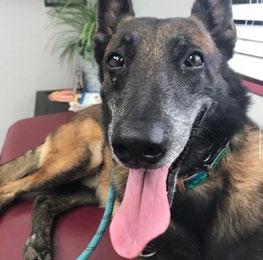

How did you find your service dog, Frank?
My service dog came into my life because my sister was dealing with some issues, and my parents started looking into things that could help her. They came across service dogs and found an organization in New Mexico that offered them. However, my family didn’t realize that service dogs bring a lot of attention, which was too much for my sister. She didn’t want people constantly approaching her with questions like, “What’s your dog for?” or “Can I pet your dog? He’s so pretty.”
Within a few months of bringing him home, I started working with him to give him something to do. He started picking up on some of the same issues I have, and at some point, seemed to think, “Oh, I’m doing my job for you now.” I talked to my sister, and with her blessing, he became my service dog.
What does the bonding process look like or the training?
The exact training for a service dog varies. In the U.S., service dogs can be trained through an organization or self-trained. Both methods are valid and covered under the ADA. People who self-train might get a puppy from a breeder at 8 weeks old, bond with them like a normal puppy, teach basic commands, and then train them for specific tasks.
My service dog came into my life at age two, already trained by the organization. As he bonded with me, we got more in sync. For example, about eight months
after I started working with him, he was being really obnoxious, and I couldn’t figure out why. He was trained to alert and respond to anxiety, create space around me (blocking), and nonaggressively alert me if someone was behind me. At that time, I have POTS, and I realized he was being obnoxious because my heart rate was high.
I kept track of it and discovered he always acted that way when my heart rate was elevated. So, I trained him on what to do. There’s scent training for cardiac alert, but because he picked up on it on his own (likely connected to his anxiety alert training), I just had to guide him on how to respond rather than go through scent training.


What does that look like for telling him what to do?
Once I figured out he was alerting to my high heart rate, which often coincides with drops in blood pressure, I decided the best thing he could do was find me a seat or make sure I stayed sitting. He’ll poke me with his nose to get my attention, and once I see him, he’ll look for a place to sit and guide me there. Once I’m sitting, he stays near me.
I’ve lived with POTS for a while, so I’m not the best at staying seated when I should. If my heart rate is still high and I try to stand, he’ll put his head or paws in my lap to keep me sitting. At home, he’ll guide me, and sometimes we end up lying on the floor to stabilize. I don’t want to lie on the ground in public, so he helps keep me seated.
If I do lie down, he’ll put his paws on me

for deep pressure therapy, which calms me if I’m anxious and often helps lower my heart rate. I’m not always the best at being like: oh yeah, I should stay put. I want to keep going with whatever I was doing.
Definitely. And what advice would you give for anyone in need of a service dog or anyone new to having one?
The service dog community online can be really bad or really good. If you find a group where people are being jerks, just find a different one because there are good ones out there. Listen to what people say, but remember it’s based on what you need. For example, some people, like type one diabetics, may have in-home service dogs to help overnight, even if they manage fine during the day. There’s no one-size-fitsall with service dogs.
Be honest with yourself about your disability. I’ve lived with POTS for a long time. When I’m riding my horse or going on walks, people don’t see how I feel—I’m able to do these things safely, but some people with POTS cannot. I always say Frank is my safety net on good days and my lifeline on bad days.
There are things you can do to manage anxiety, prevent flashbacks, or deal with PTSD, but they don’t always work. With POTS, I can stay hydrated, increase my salt, and use compression, but I can’t make my heart listen to me. He helps me respond and keeps me from falling. I can manage without him, but he makes it easier.
When it comes to service dogs and places of business, how does that work logistically?
In a perfect world, businesses can only ask two questions: Is that a service dog? And what task or tasks does it do? You don’t have to demonstrate tasks. My answer can simply be, “Yes, he’s a service dog. He does cardiac alert and response.” That’s it—he doesn’t have to show anything. In theory, I should be able to go anywhere the public can, and those are the only questions a manager is allowed to ask.


The big problem is fake service dogs, since there’s no registration system for them.
Is there anything that readers should know on a more general note about animal care, animal fun facts?
A big thing when it comes to animal care, especially with service dogs, is that people often ask about making them work and wonder, “What if they don’t want to work?” There is a very high rate of service dogs that don’t make it. They might be wonderful pets, maybe even pets that are too smart for their own good, but they don’t graduate or successfully help people with what they need. They just can’t do it for whatever reason. For example, I have a black lab named Cole. He is very smart, wants to help, and loves to please. But he would never make it as a service dog. He’s too friendly and wants to greet every single person he sees and every single dog. Even with training, he still wants



to, and that’s just his personality. Other dogs don’t make it because they’re too scared or they don’t pick up on the cues. There are so many reasons a dog might not make it as a service animal. That’s not even including health issues. Unfortunately, in some of my groups, I’ve seen situations where a dog was doing well but was diagnosed with early-onset arthritis or hip dysplasia. They can’t work or can’t work as much as their handlers originally needed them to.
If you could tell someone your most important service animal etiquette request, what would you say?
I would say it’s twofold. One is, we have our service animals for a reason. Because regardless of if you see it or not, you have to have a disability to have a service animal. I actually counted one time, and it was 30 comments during what should have been a 15-minute trip, and it ended up being a 30-minute trip. My service dog has a patch that says, “Stop, do not pet. Please don’t ask if you can play. Be respectful.”
Another thing is taking pictures. Yes, our dogs or horses are cute, but would you like it if a stranger took a picture of you? A service dog is not your child’s entertainment. One of the best interactions I overheard was in Target when a little girl said, “Oh, look, it’s a dog,” and her dad replied, “What dog?” like he thought she meant a stuffed animal. When she pointed out Frank, he said, “That’s a very special dog,” and explained that the dog had a job. She was excited to learn about it because
kids think it’s cool when animals have jobs, and I’m sure she went to school the next day telling everyone what she learned.
The other thing is that service dogs are very well trained, but they are still dogs. During our first Halloween, Frank got scared of a moving decoration with glowing eyes. They’re trained, but they still have their own minds. You don’t work your dog if they’re sick, but like kids, you can’t predict every time your dog might have an upset stomach or something unexpected. Those things happen.



Is there anything special the vet can do? Like, does your vet have specific checks for a service dog,
When they’re younger, before they start working, the vet can check their hips, knees, and general blood work to make sure there’s nothing abnormal. For example, one of my previous dog’s first blood work showed really high kidney enzymes, which led to discovering she had kidney problems. She made a wonderful pet but wouldn’t have been suitable as a service dog. It’s important to make sure they’re healthy. The vet and your trainer can also work together to evaluate their personality. Just like people, some dogs are more outgoing, while others are more likely to be scared of things. If you have a dog who’s absolutely terrified of everything, you can work with them, but realistically, they probably won’t be able to work through it enough to be calm in public.

* 1 cup of pureed pumpkin (not the pie filling—just plain pumpkin)
* 2 1/2 cups of oats (ground into flour or use oat flour)
* 1 egg (for binding)
* 1/2 teaspoon of cinnamon (optional, but a nice flavor boost)
1. Preheat the oven to 350°F (175°C). Line a baking sheet with parchment paper. It’s always a good idea to have the oven preheated so you can pop the cookies in as soon as they’re ready. No one likes waiting— especially your dog, who will probably be drooling by now.
2. In a large mixing bowl, combine the pureed pumpkin, egg, and cinnamon. Stir until the mixture is smooth. Make sure the egg is fully incorporated because this helps the cookies hold together. Cinnamon is optional, but trust me, your kitchen will smell like a fall wonderland if you add it.
3. Slowly add the oat flour into the pumpkin mixture, stirring as you go. If you don’t have oat flour on hand, don’t worry. Just blend some rolled oats in a food processor or blender until they turn into flour. The dough will start to come together and should be easy to handle. If it’s too sticky, add a little more oat flour, one tablespoon at a time.
4. Roll out the dough to about 1/4 inch thick on a floured surface. You can use a rolling pin for this or just flatten it with your hands— totally up to you. Pro tip: If the dough is still a bit sticky, dust your rolling pin or hands with a little oat flour to keep things smooth.
5. Cut the dough into shapes using cookie cutters, or if you’re feeling lazy (no judgment), just cut them into squares with a knife. Your dog won’t care whether they’re bone-shaped or just blobs—they’ll love them either way.
6. Place the cookies on the baking sheet and pop them in the oven for 20-25 minutes. You’ll know they’re done when they’re firm and slightly golden around the edges. The longer you bake them, the crunchier they’ll get, which is great for keeping your pup entertained with a longer chew.
7. Let the cookies cool completely before giving one to your dog. I know, the waiting is tough, but hot cookies can burn your pup’s mouth (not to mention your fingers).
8. Store them in an airtight container, and they’ll last for about a week. If you want to make a big batch and save them for later, you can also freeze them. Just thaw them out before serving.
* 1 Can of Tuna in Oil, undrained
* 3/4 Cup Coconut Flour
* 1/2 Cup Whole Wheat Flour
* 1 Egg
1. In a food processor, combine the tuna and eggs and blend well.
2. In a bowl, combine the flour and tuna mixture. Mix well.
3. Switch to using your hands and knead the dough. This dough will be soft and only be able to hold together in smaller balls. For this reason, I folded the dough in half and made two separate balls before rolling them out.
4. Sprinkle wheat flour on a flat surface and easily flatten out the dough with your hand, then gingerly use a rolling pin to flatten out the dough to about 1/4 inch thick. Roll the dough in small, short rolling motions instead of longer, harder rolling motions, as you would a pie crust.
5. Line a baking sheet with parchment paper and cut out dough with3/4 of an inch to an inch cookie cutters. Place treats on the sheet.
6. Heat the oven to 330 degrees Fahrenheit and bake for about 15 minutes, or until hard.
Notes:
This dough will want to fall apart more easily due to the coconut flour. However, the coconut flour is a great element for the cat’s fur and overall health. If the dough is too dry, add up to 1/3 cup of water.
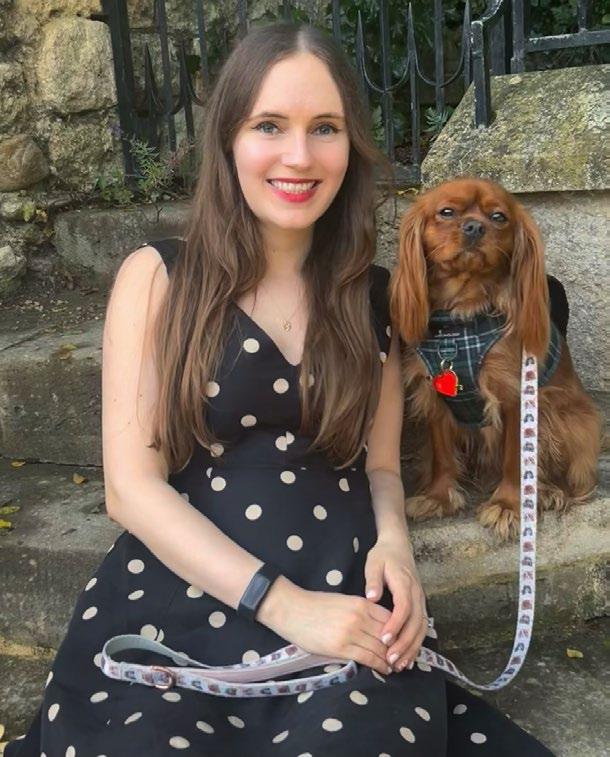
What is the story behind Tevye’s name for those who don’t know?
We are big fans of Fiddler on the Roof, which was my grandfather’s favorite musical. He passed away 10 years ago, and this is the first dog we’ve gotten since his passing. Since Fiddler on the Roof was his favorite, we named Tevye after it. We also loved the irony of naming a friendly little puppy after a grumpy father figure.
How did you find him?
I was thinking about getting a working dog, but we needed one tailored to our lifestyle, my access needs, and living in a small London flat. The Cavalier was one of the few quiet, small breeds.
We also needed a calm dog, as it’s easier to train calm dogs for assistance tasks, though they can be more energetic when off duty. Bigger breeds require more exercise, which I can’t provide due to my disabilities. Spaniels, with their hunting ancestry, are excellent for scent work, which was another reason we chose a Cavalier.
What does the bonding process or the training process look like?
It’s different for everyone. I’m an ambulatory wheelchair user, and I got Tevye to improve my mobility without aids, which has been great. We got him as a puppy and started immediately with basic obedience training, the foundation for what he’d need as he got older.
Tevye is a mix of owner-trained and professionally trained. We began training him
ourselves, then worked with a virtual trainer for feedback. Later, he went to Adolescent Dogs in Winchester. I taught him deep pressure therapy and basic mobility tasks, which the trainers reinforced. They also began medical alert training, which required my scent. They laid the groundwork, and I continued his training.
What advice would you give for anyone in need of a service dog or anyone new to having one?
If you’ve never had a service dog, talk to a few people who have one. You and your doctor know your needs, but no two service dog situations are the same. Training is tailored to individual needs. Some organizations focus on specific tasks like mobility or medical detection.
I need Tevye for hEDS and POTS. He performs three task types: medical detection for high heart rates, deep pressure therapy for circulation and blood pressure, and mobility tasks. Initially, I prioritized deep pressure therapy and climbing stairs, but later realized I could also train him for medical detection. Tevye can’t perform some mobility tasks because he’s small, but small dogs have their own advantages.
Is there any advice or a message to readers about how we can help when it comes to seeing an assistance animal in places of business or anything like that?
Oh gosh, where to start? Give handlers the benefit of the doubt. It’s harmful to assume a handler is being dishonest just because their
dog doesn’t match preconceived notions of a working dog. People often think only breeds like Labradors, Golden Retrievers, Poodles, or German Shepherds are assistance dogs, as those are common guide dogs.
If a disability isn’t visible or familiar, people assume the dog is fake. Businesses can make handlers feel welcome by offering accommodations like water bowls on hot days or seating away from crowds. Most importantly, don’t interrogate handlers or assume deception. It’s stressful when security guards question us as if we’re trying to trick them. This reflects poorly on a company’s accessibility training. In the 21st century, disability must be included in diversity and inclusion conversations. While handlers aren’t legally required to use labeled harnesses, I think they’re helpful to avoid confusion, except in extreme weather.
Commission has an online guide called Assistance Dogs: A Guide for All Businesses. In the US, ADA information about service dogs is available online.
Businesses can also research disability theory. The core idea is the difference between the medical and social models of disability. The medical model views the disabled person as the problem, while the social model focuses on societal and environmental changes to improve accessibility. This applies to assistance dogs and promotes universal design— creating systems usable by everyone instead of separate models for disabled and nondisabled people. I’ve been engaged in disability studies for a long time.
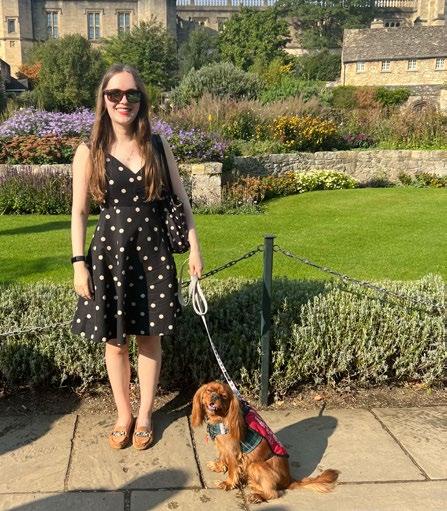
Are there any social media accounts or websites that you’d recommend for readers to get more educated or involved in the world of assistive animals?
Yes, absolutely, there are many Instagram pages about assistance dog etiquette. In the UK, the Equality and Human Rights
During my MA at SOAS, University of London, my dissertation explored universal design in museum curation for sensory disabilities. While it wasn’t about assistance dogs, the same principles apply: universal design benefits everyone. Disability-positive language is another area where inclusivity efforts can improve. At the end of the day, just talk to people with.
Is there anything people should know in terms of assistance animal etiquette in general?
Context and how you ask matter. It’s exhausting when someone approaches me and demands to know my entire medical history. My dog’s jacket clearly says, “POTS MEDICAL ALERT DOG - DO NOT TOUCH” in large letters, which is more information than anyone needs. My number one bit of advice is to avoid distracting the dog while the jacket is on—don’t talk to it, make extended eye contact, or try to feed it. That happens a lot. People will try to give him food or let their pets approach while he’s working, saying, “Oh, my dog’s really friendly.” When Tevye is off duty, he loves to play with other dogs, but when he’s working, it confuses him because it sends mixed messages.
Questions can be good, but it’s important to respect a handler’s privacy and time. If I’m talking to someone, on the phone, doing a transaction, or actively training Tevye, I prefer not to be interrupted. Even though Tevye’s jacket is clearly labeled, people still touch him or ask to after reading it. If his workday is ending, I might say, “Hold on a minute, and you can pet him then,” but ideally, they wouldn’t ask when it’s clear he’s working.
When he’s off duty, do you take the vest off?
Yeah. The jacket’s only on when he’s working, usually in public. He’s off duty at home, but he still performs a lot of the tasks for me there.
What impact has having an assistance dog had on your work and disability rights activism?
I’ve been involved in disability rights activism for a long time, and in my early adulthood, I considered fully dedicating my career to accessibility. Having an assistance dog over the past two years has given me a more wellrounded perspective on accommodations that I didn’t have before Tevye,. I deeply respect full-time disability activists and academics. The work they do is crucial to advancing disability studies and improvements. I followed a different path because art history is another passion of mine, so I work in the art industry. It’s been rewarding to integrate disability allyship into my work and my appraisal firm, Ashley Asian Art. I’ve incorporated inclusivity and disability rights awareness into my professional niche, starting with my SOAS MA dissertation on universal design and continuing through consulting.
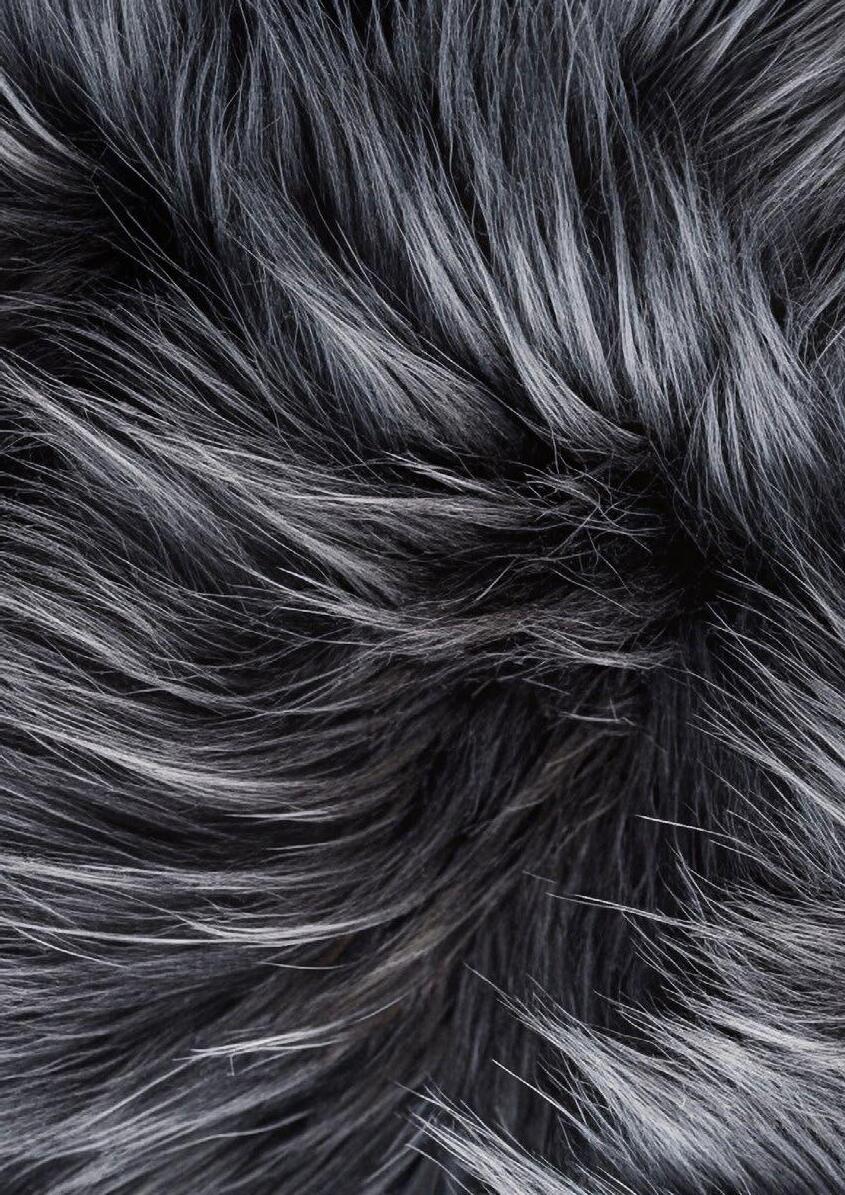
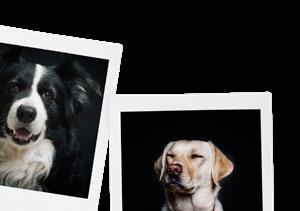
How did you get into dog walking?
I have been living in places that have two-pet limits for years and I already have two pets. Animals have always been a special interest of mine and so by providing my services I felt I could help people care for their pets while also living vicariously through them.
Advice to anyone who wants to go into dog walking?
My advice would be a two parter: take small walks on your own more to build up stamina for busier days and make sure you manage your time well so you don’t burn yourself out.
Favorite part of dog walking and least favorite part?
My favorite part of dog walking is seeing the different personalities come out every trip! Even the same dog can be so different after a few walks so it’s fun to watch them explore and get excited about going out. My least favorite part would be walking by triggers with reactive dogs. All dogs deserve outside time but many of the dogs I walk are not
used to different people walking them and I feel bad that they can’t enjoy all of their walk at times. I like to think I do my best to make them comfortable and confident with me for the short walk.
Favorite dog personality or anecdote?
I can’t really say I have a favorite anything when it comes to individual dogs. What I will say is that I love when a dog feels comfortable enough with me and the walk to let their personality through! It really verifies what I’m doing is great!
What does a sample dog walker schedule look like?
I actually offer a lot of pet services such as walks, boarding, grooming, drop-ins, and pet taxi—so while walks don’t normally take up the majority of my schedule, I can say that the repeat clients like to book 30 minute or 1 hour sessions early morning or evenings. It can get busy during the hours of the day where it’s coolest.

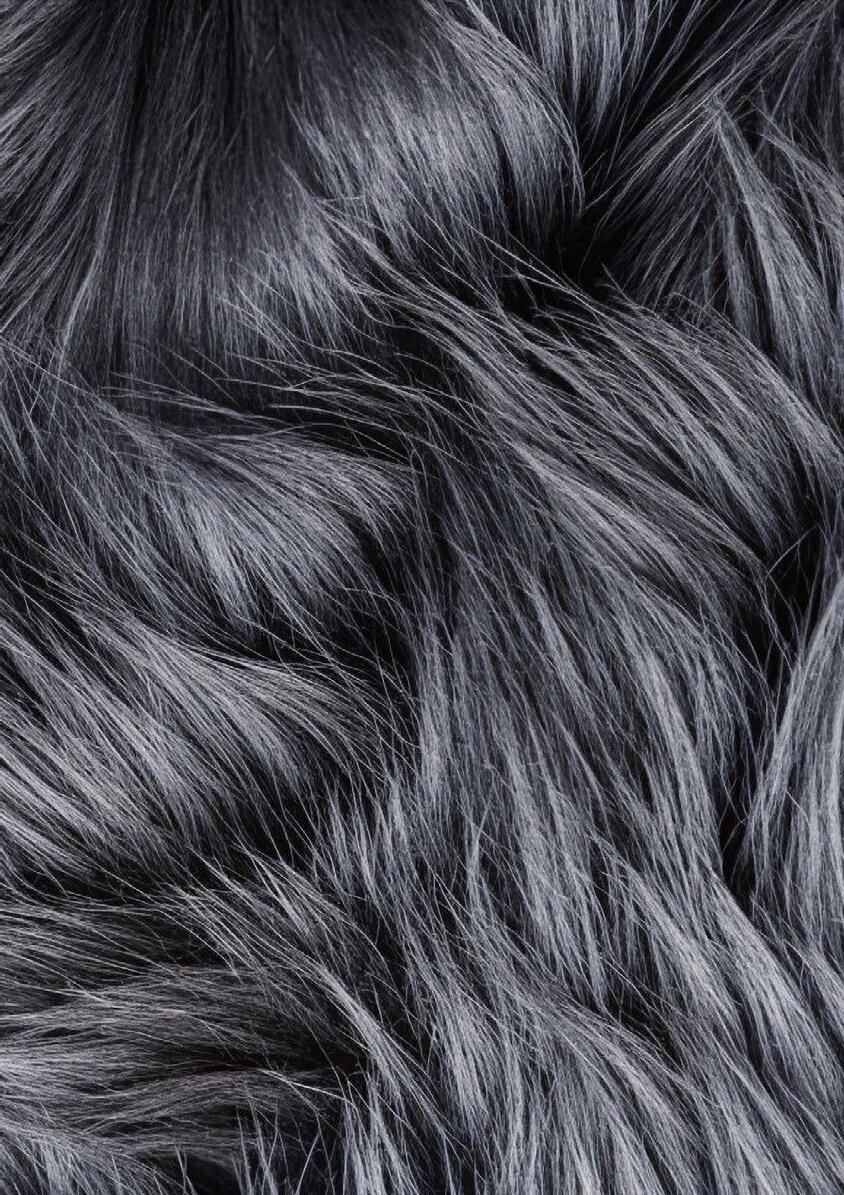
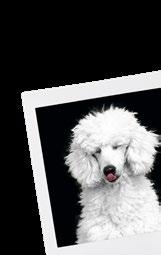
G a r b a ge bag s an d ba

l o o n s they look like they are alive.

Saying it in a fancy, made-up way makes it more fun. If there is loud honking involved, count me out.
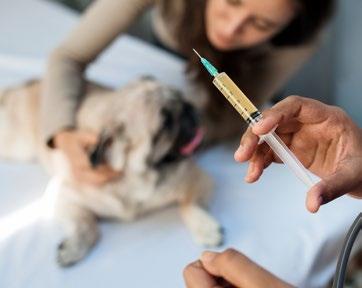
(duh) of any kind.
H u m a n d oin g t o o m u c h w o r k
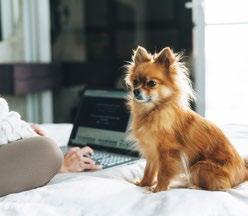
let’s put our paws on their keyboard or sit on their work. Same goes with travel (any suitcase, and we must climb into it).
he g room e r
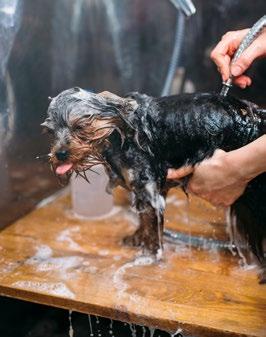
Also, a clean coat. I must get it all messed up as SOON as I am out of the tub. Pair that with the zoomies and that is my version of an “everything shower”!

W a t er (for some cats/ dogs). See above groomer, as it does relate.

E a r s e nsi ti v i ty i n g e ne r a l
We can hear all kinds of things that you can’t. So beware that if you do something at a normal “human” volume, it could sound like a concert-level decibel for doggies (or kitties).
Follow Amber Liu at: @artbyamberliu
